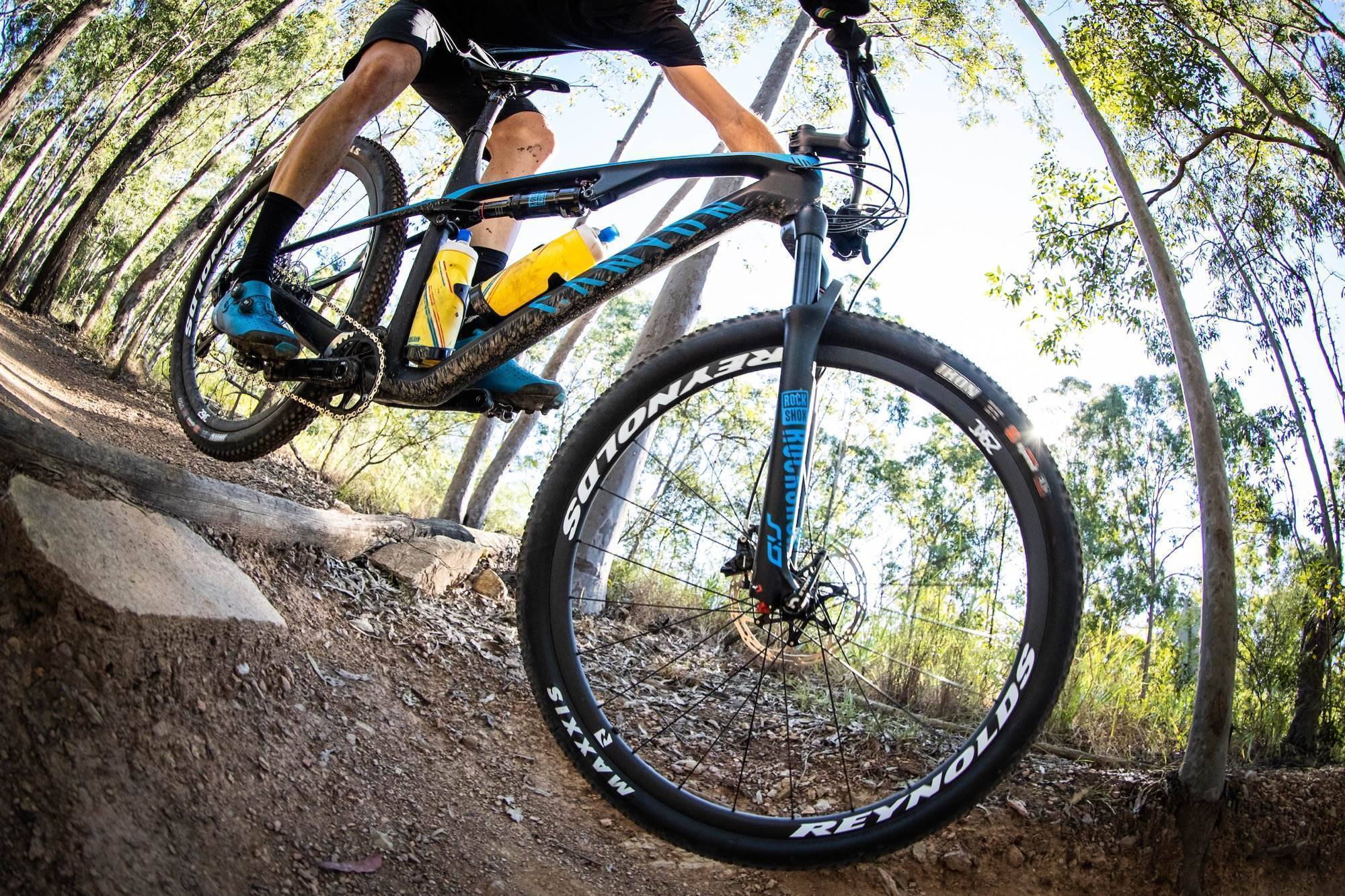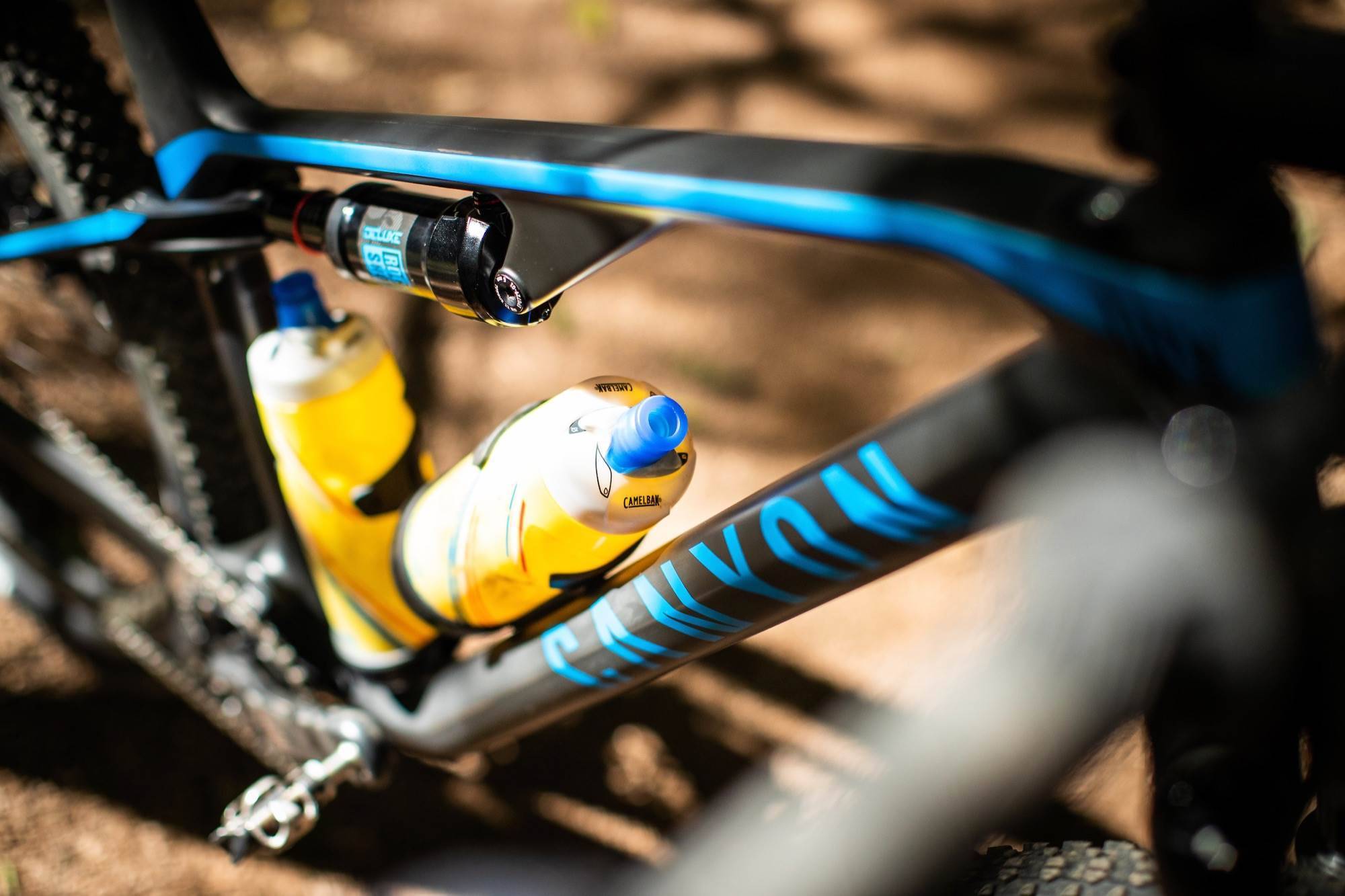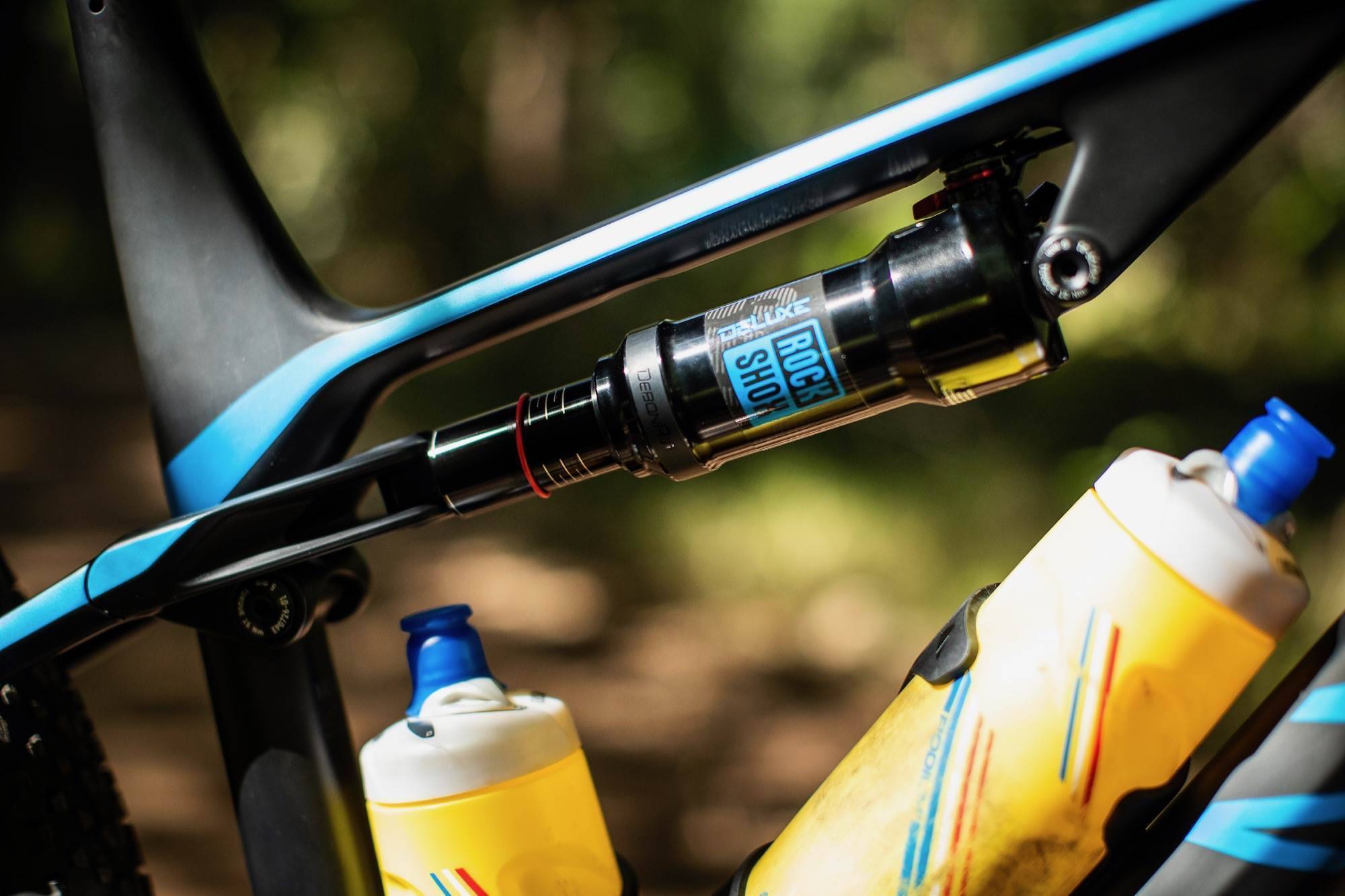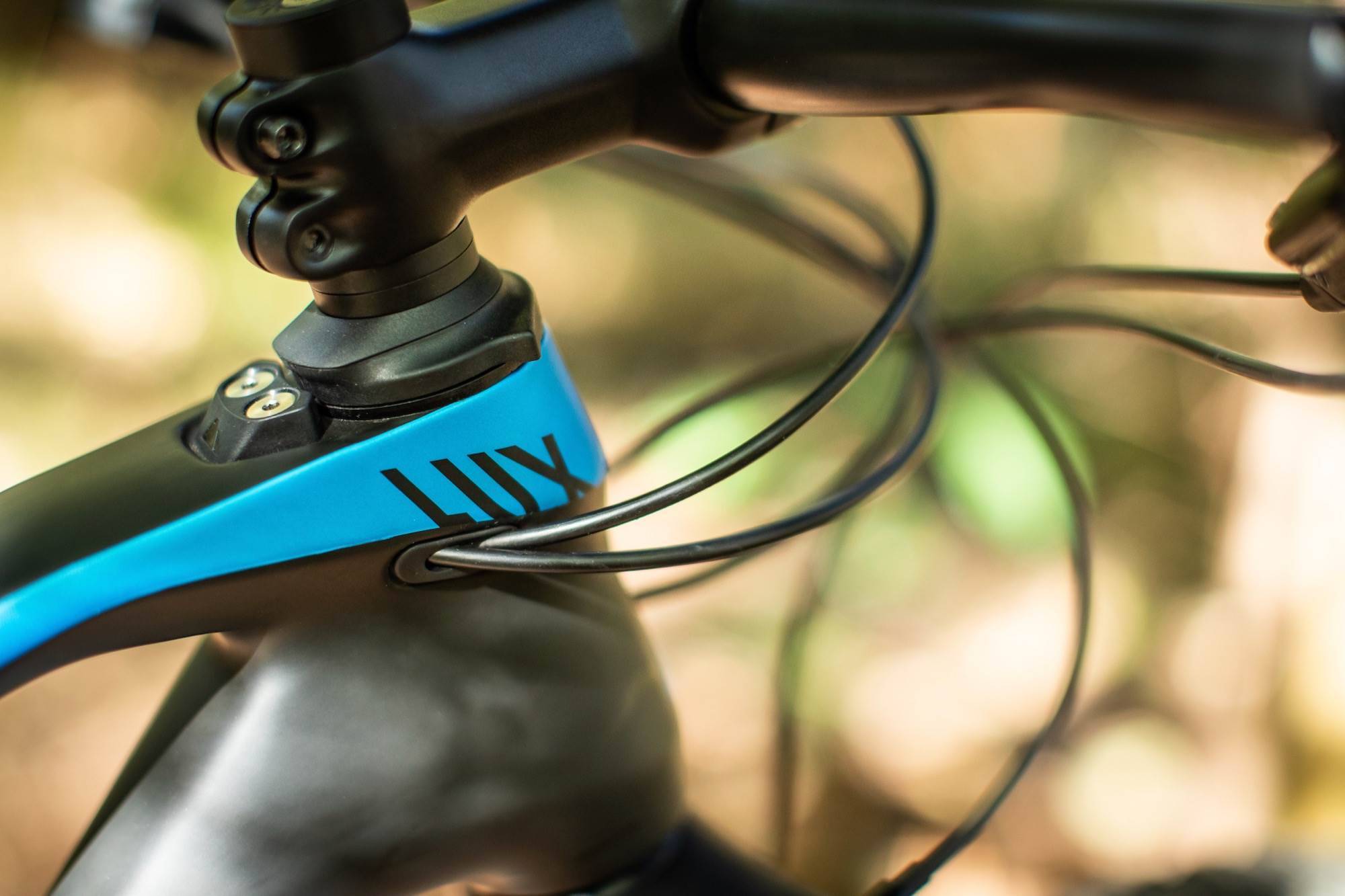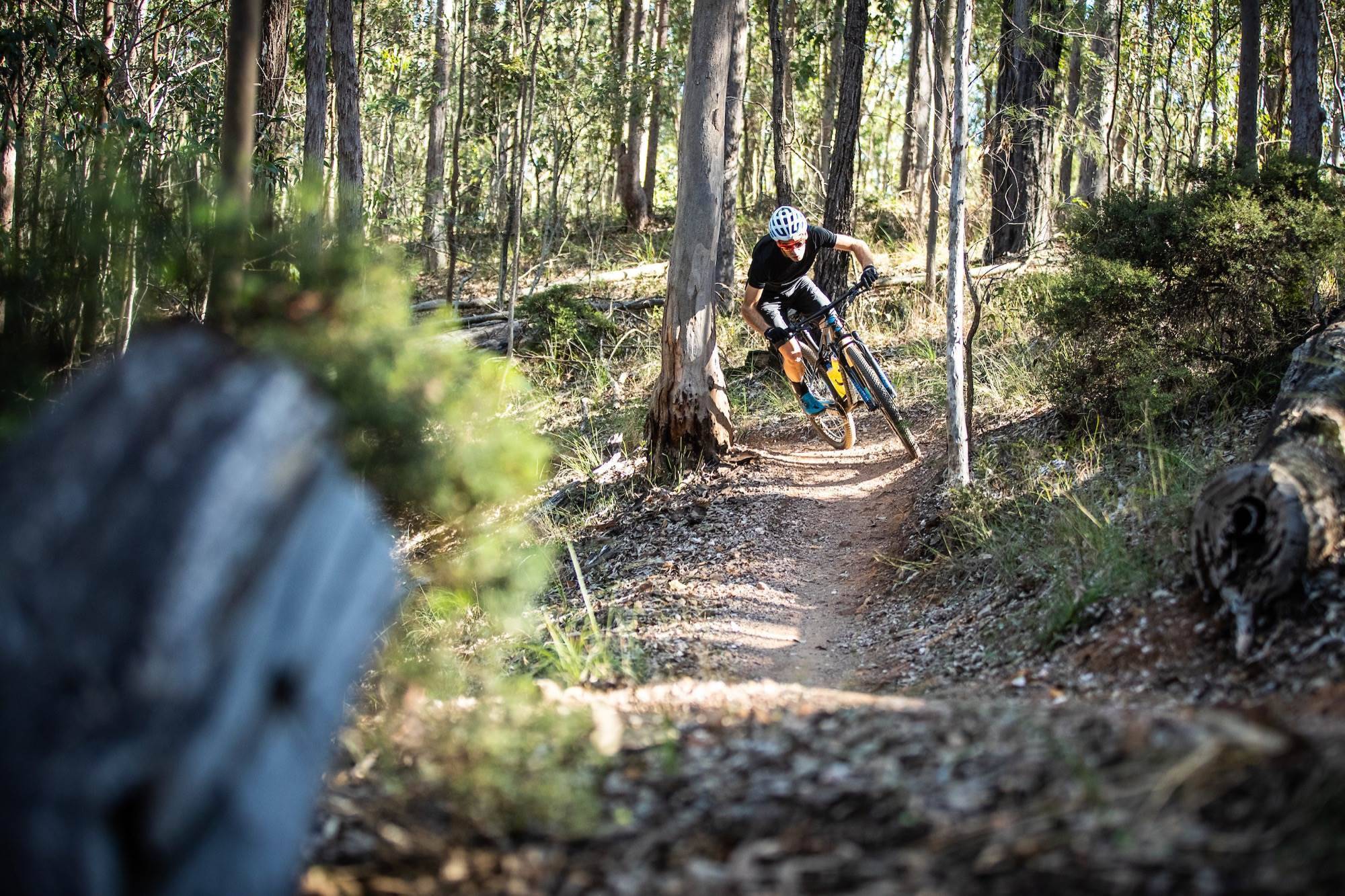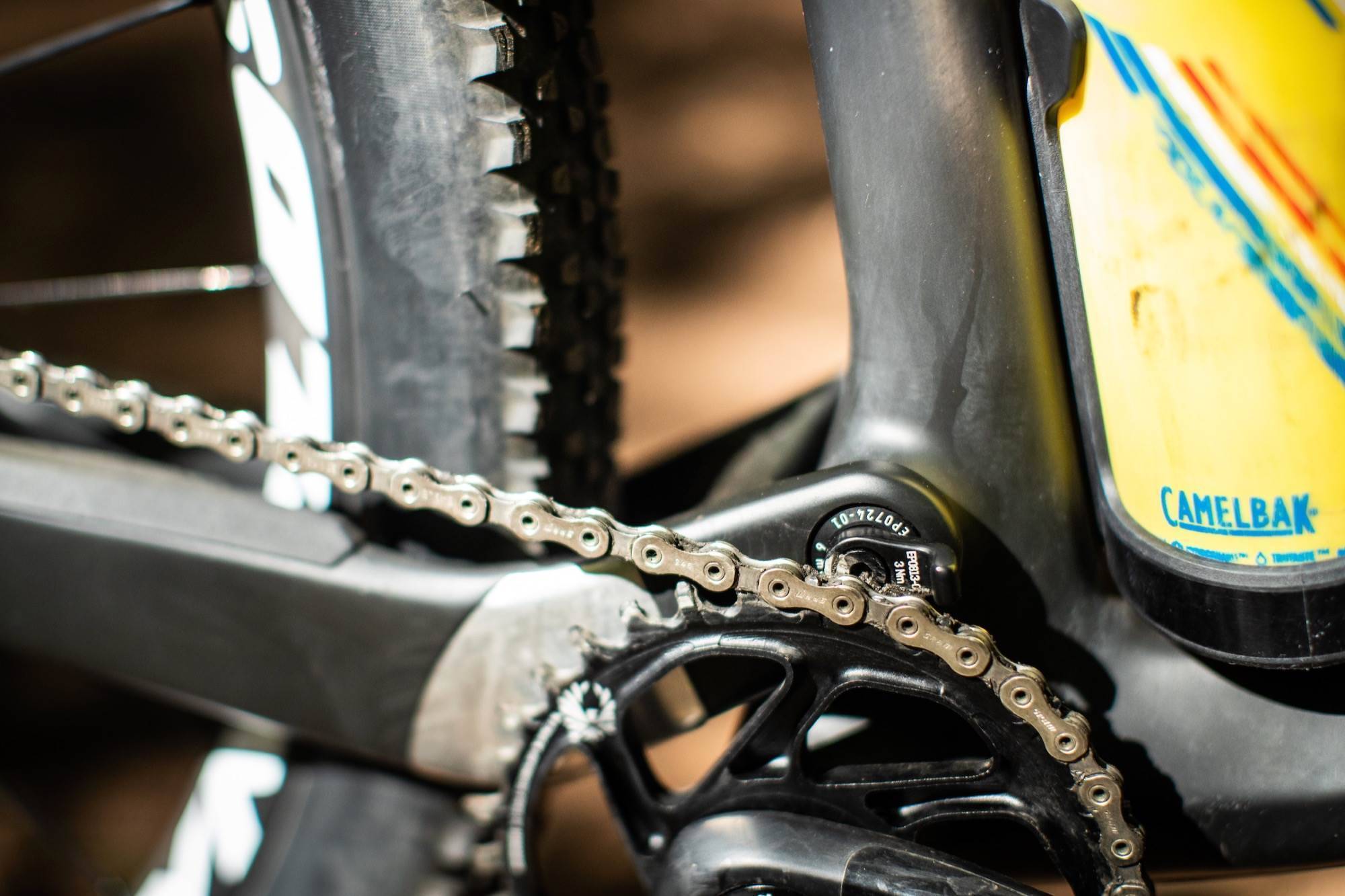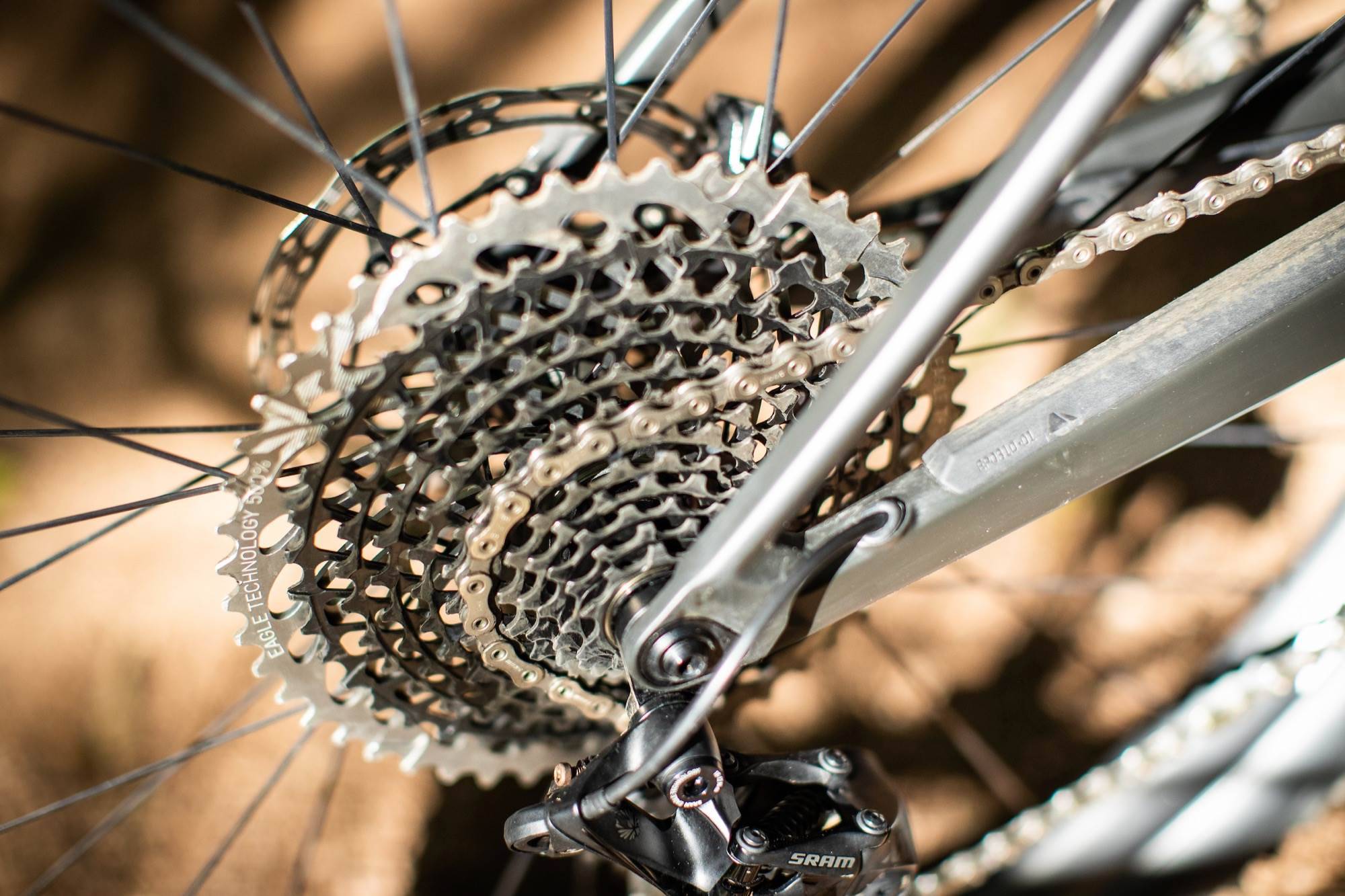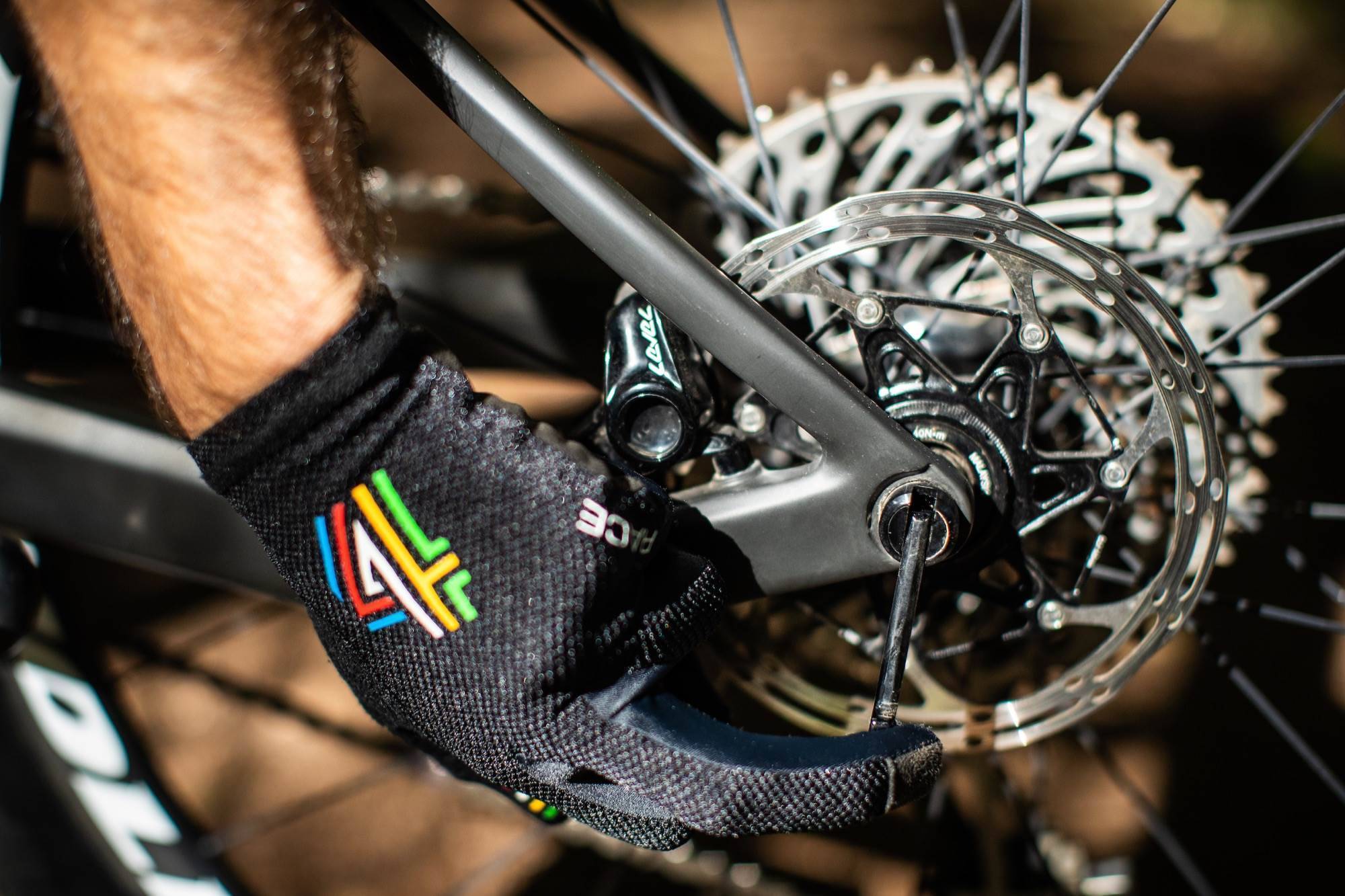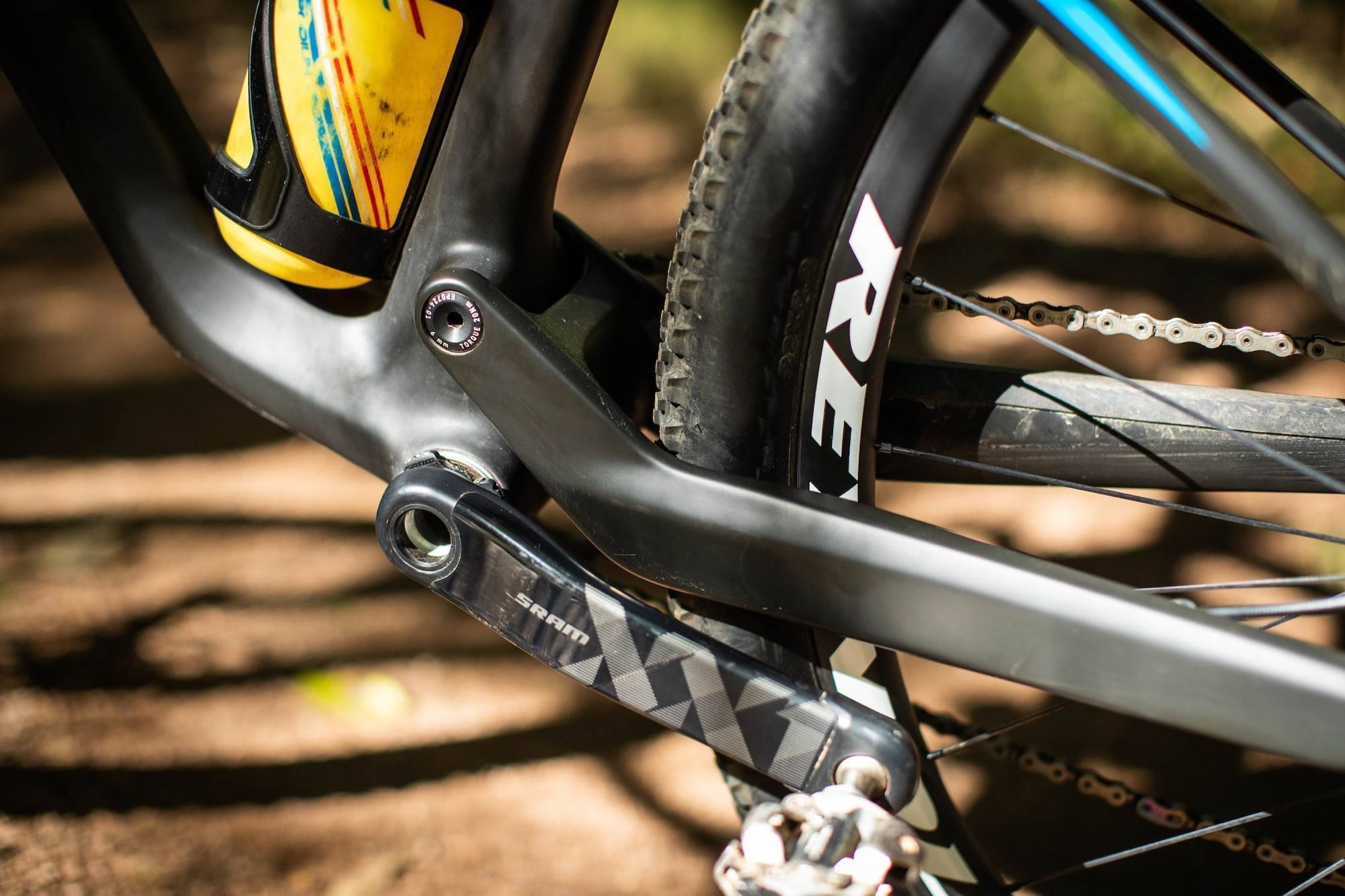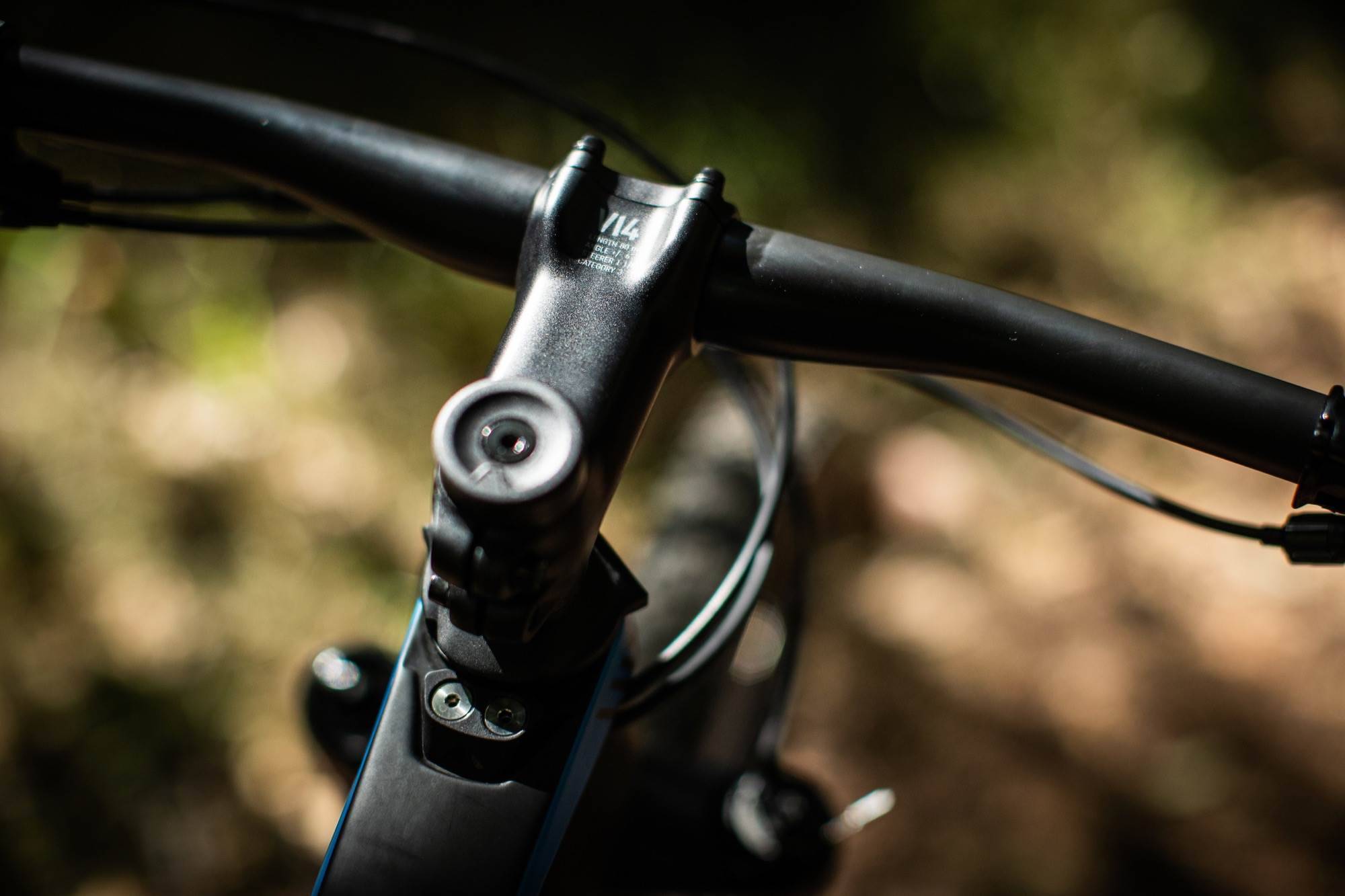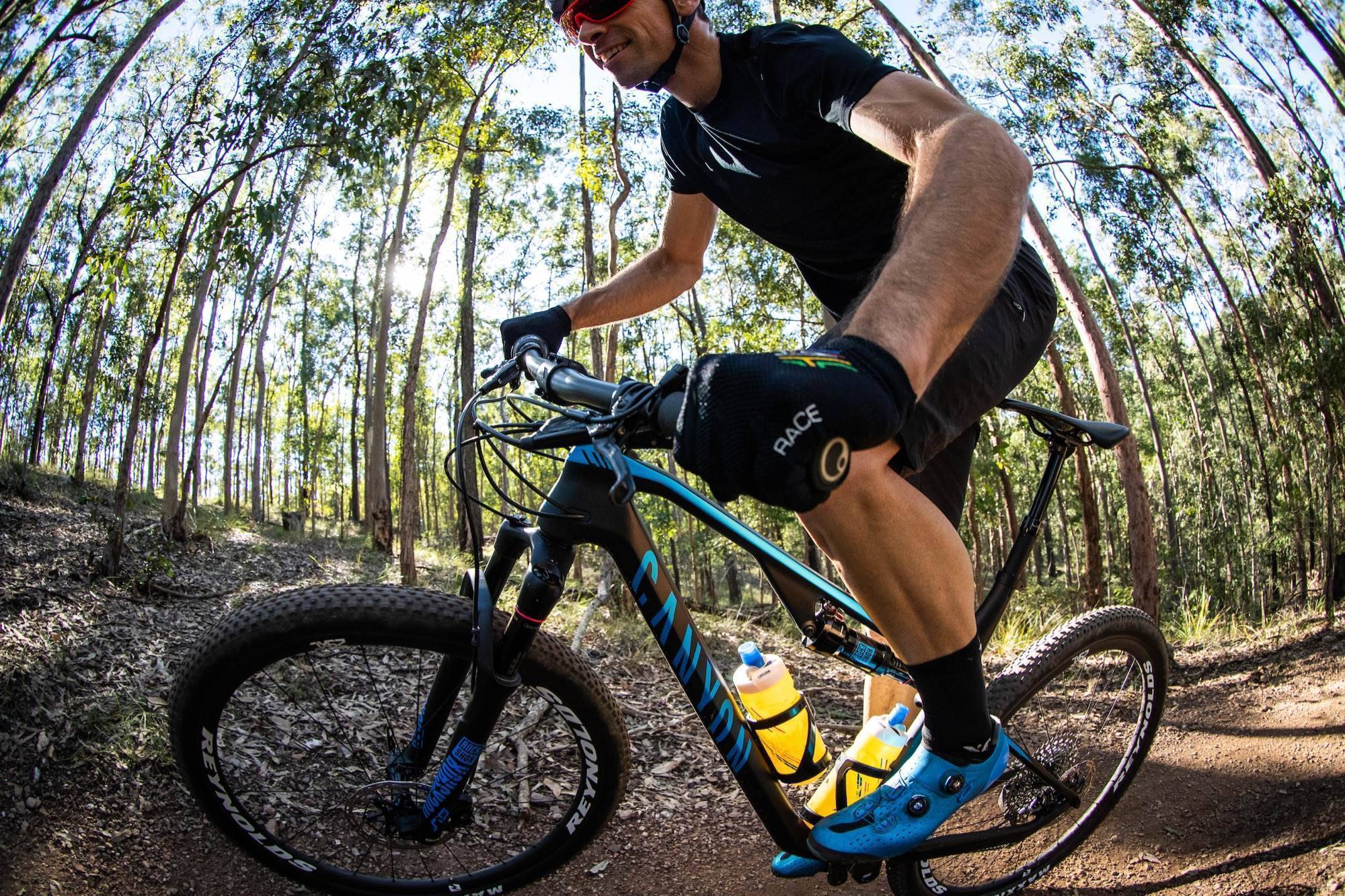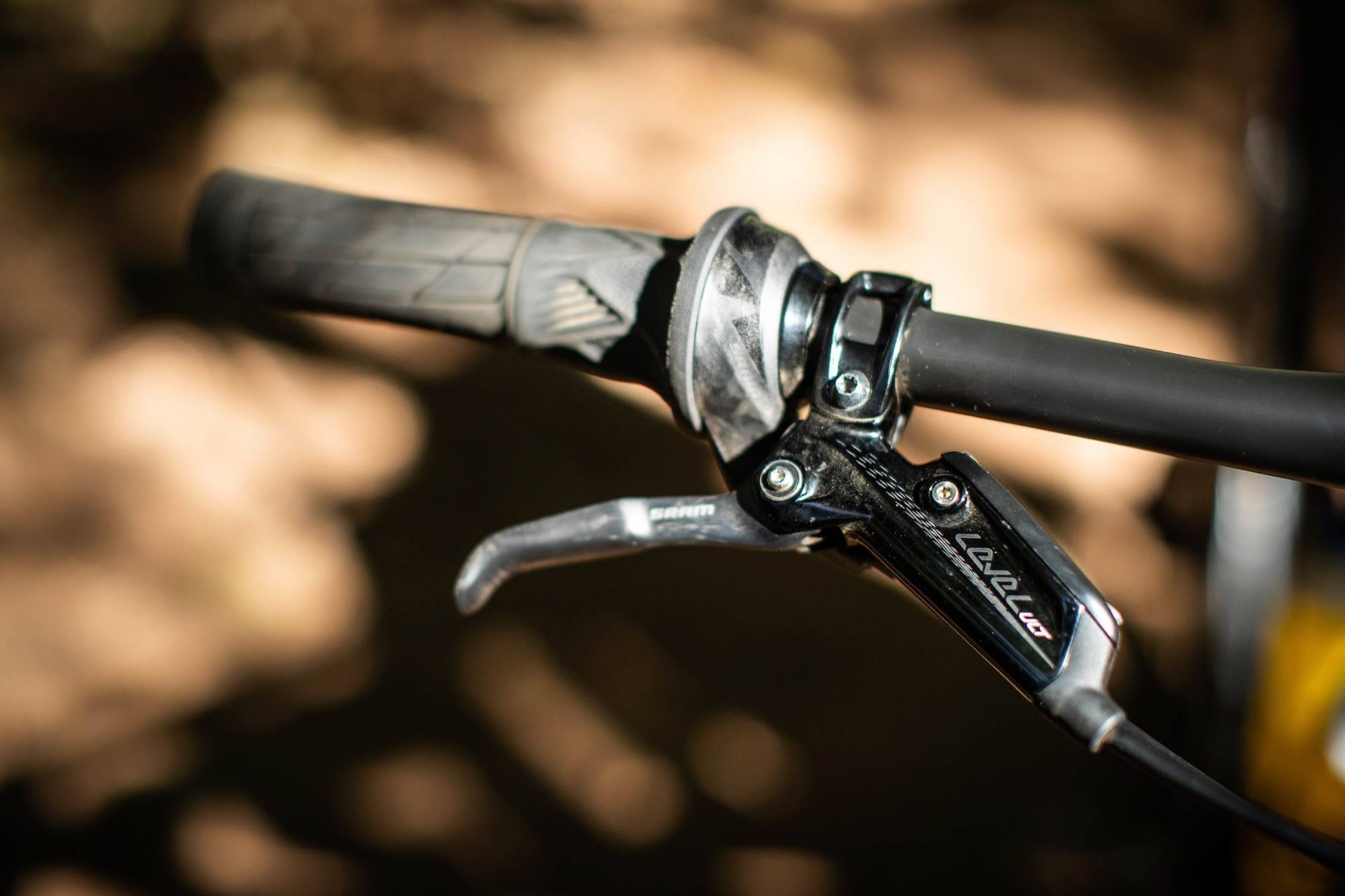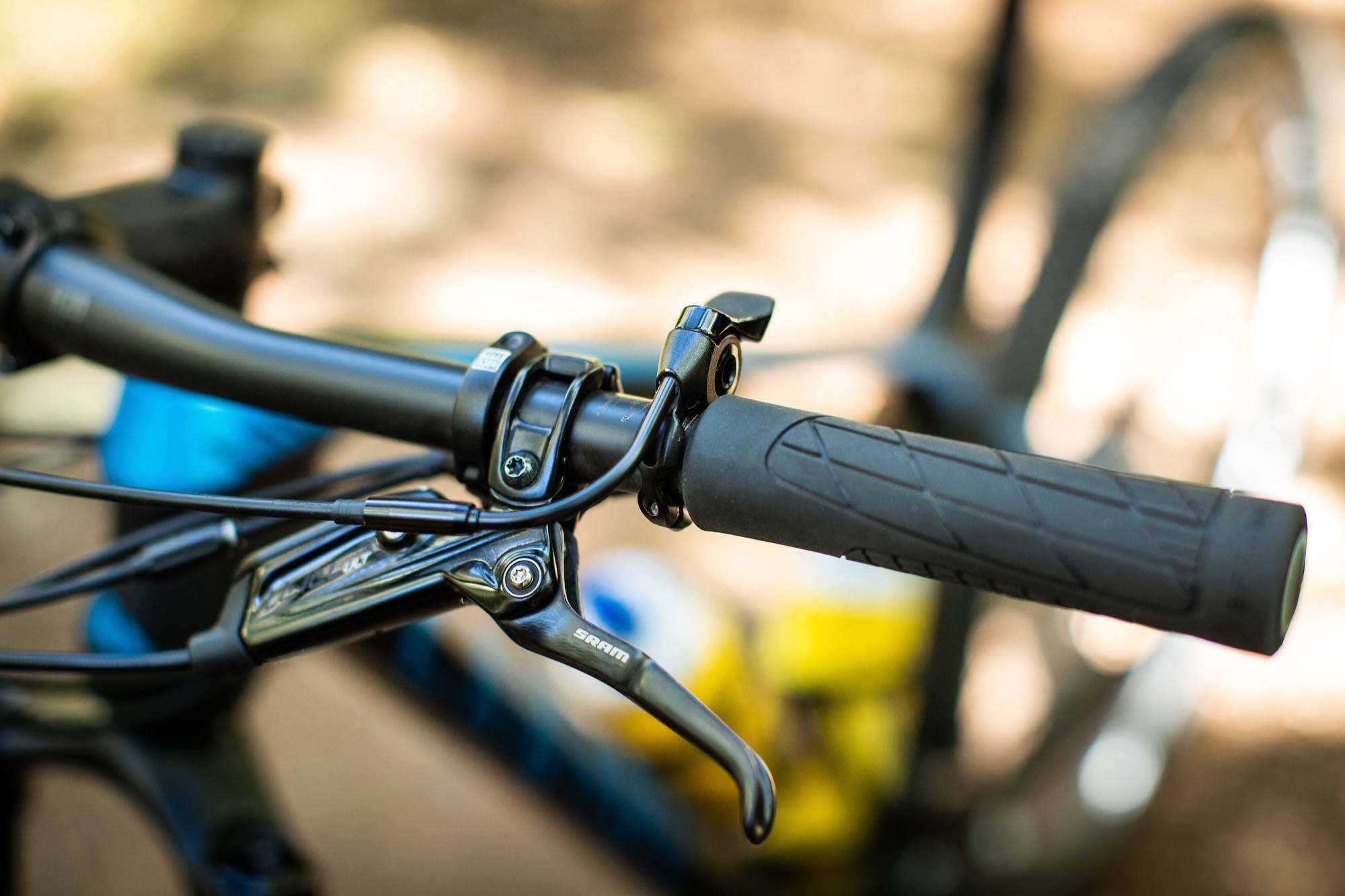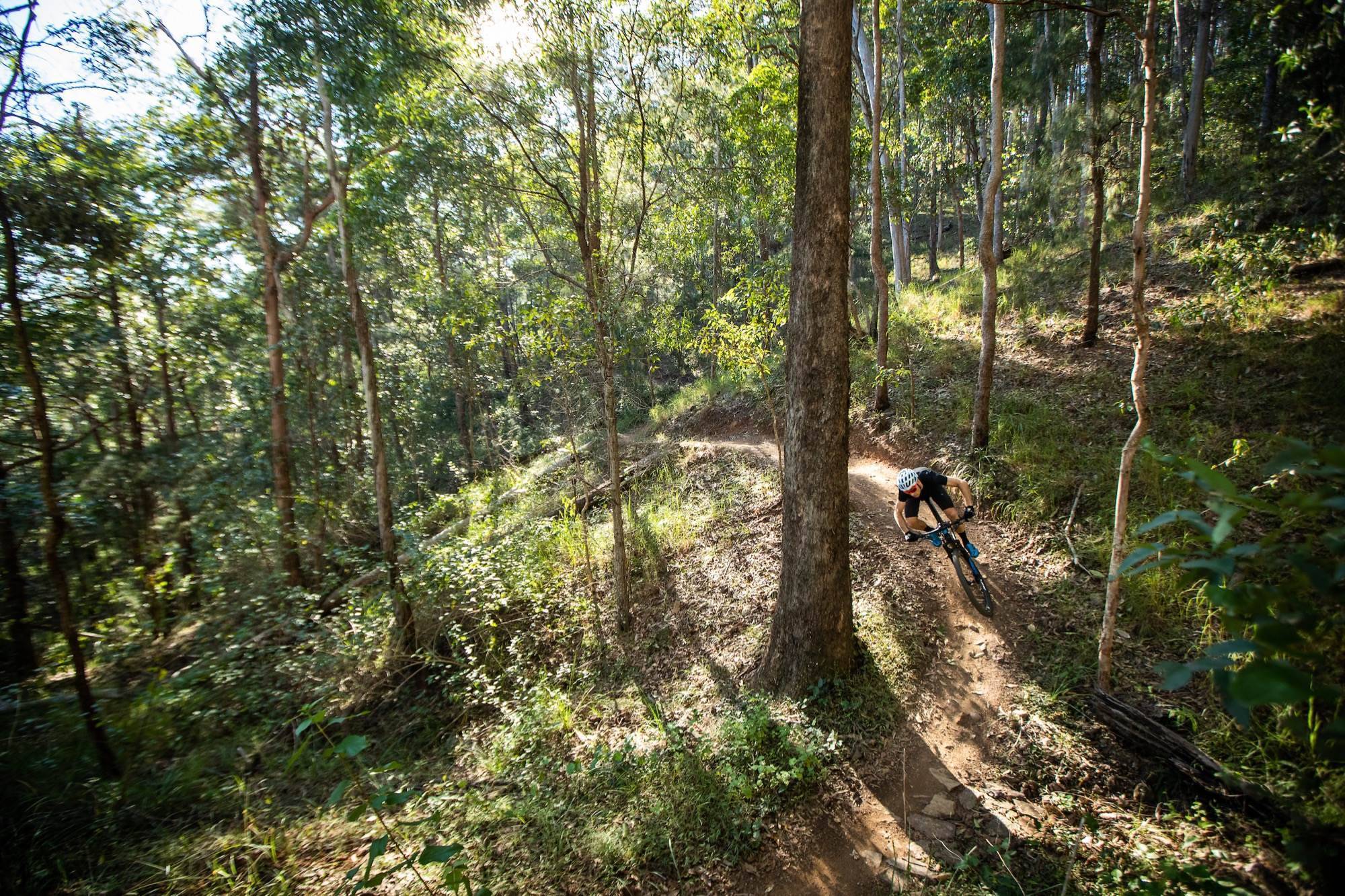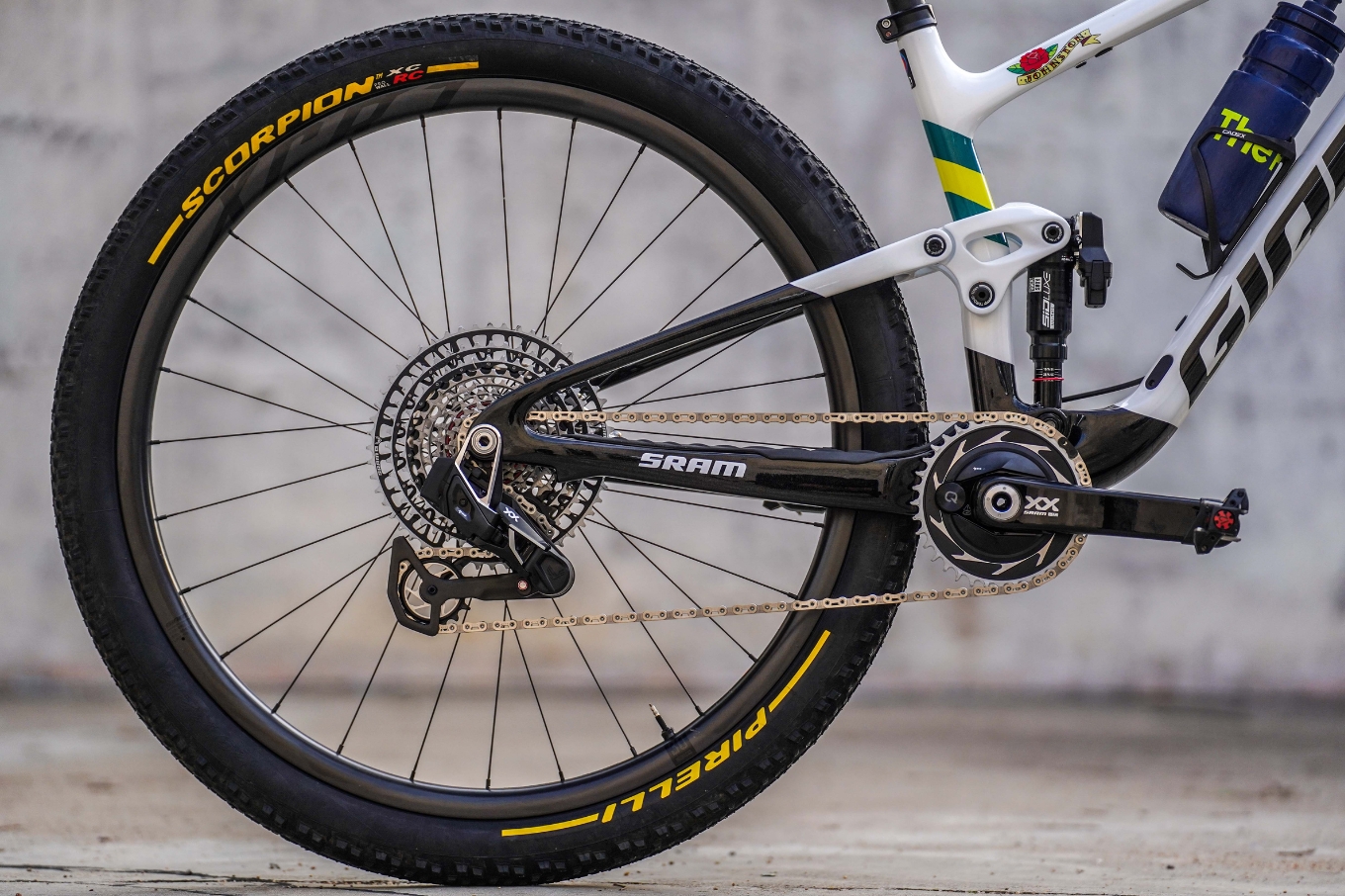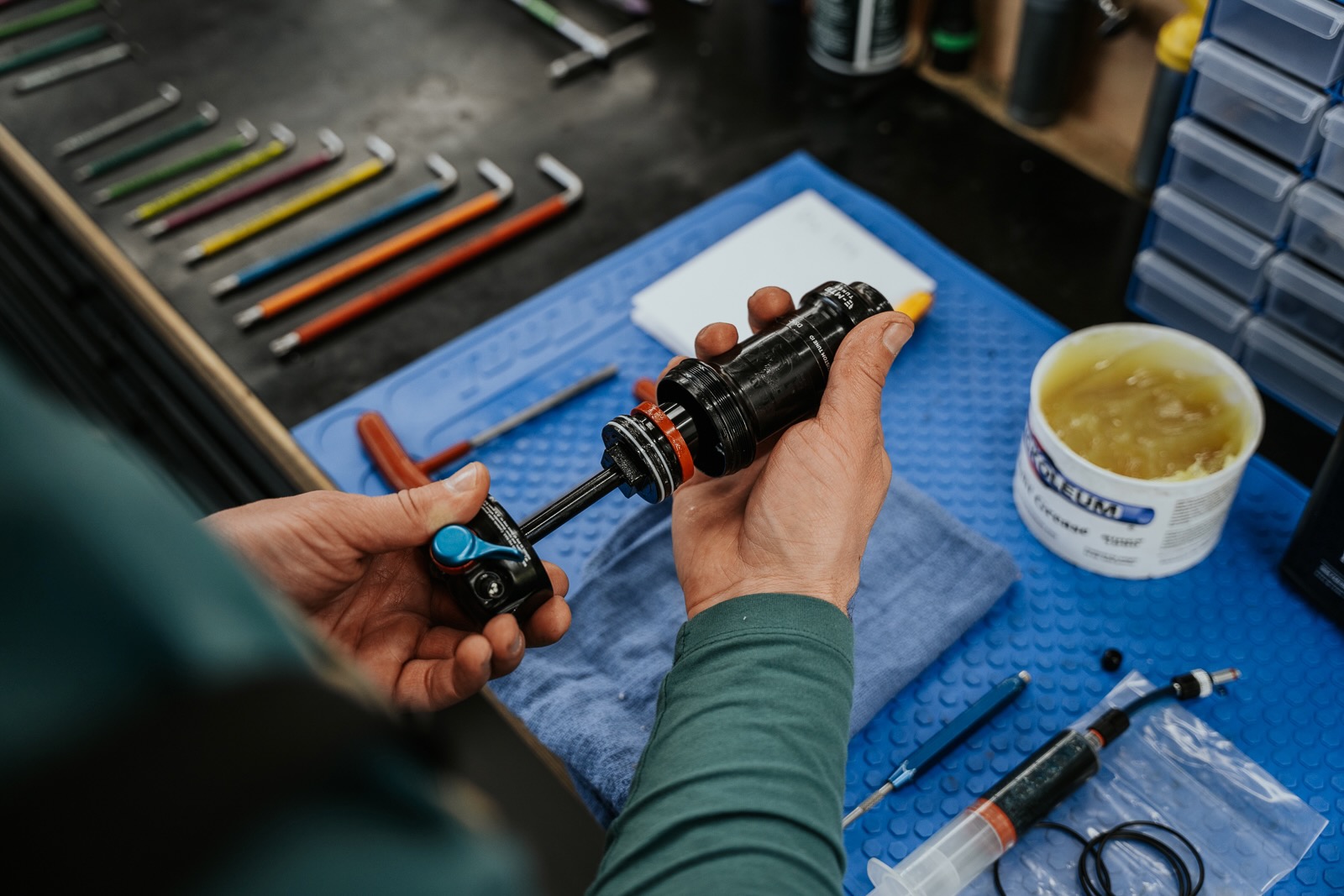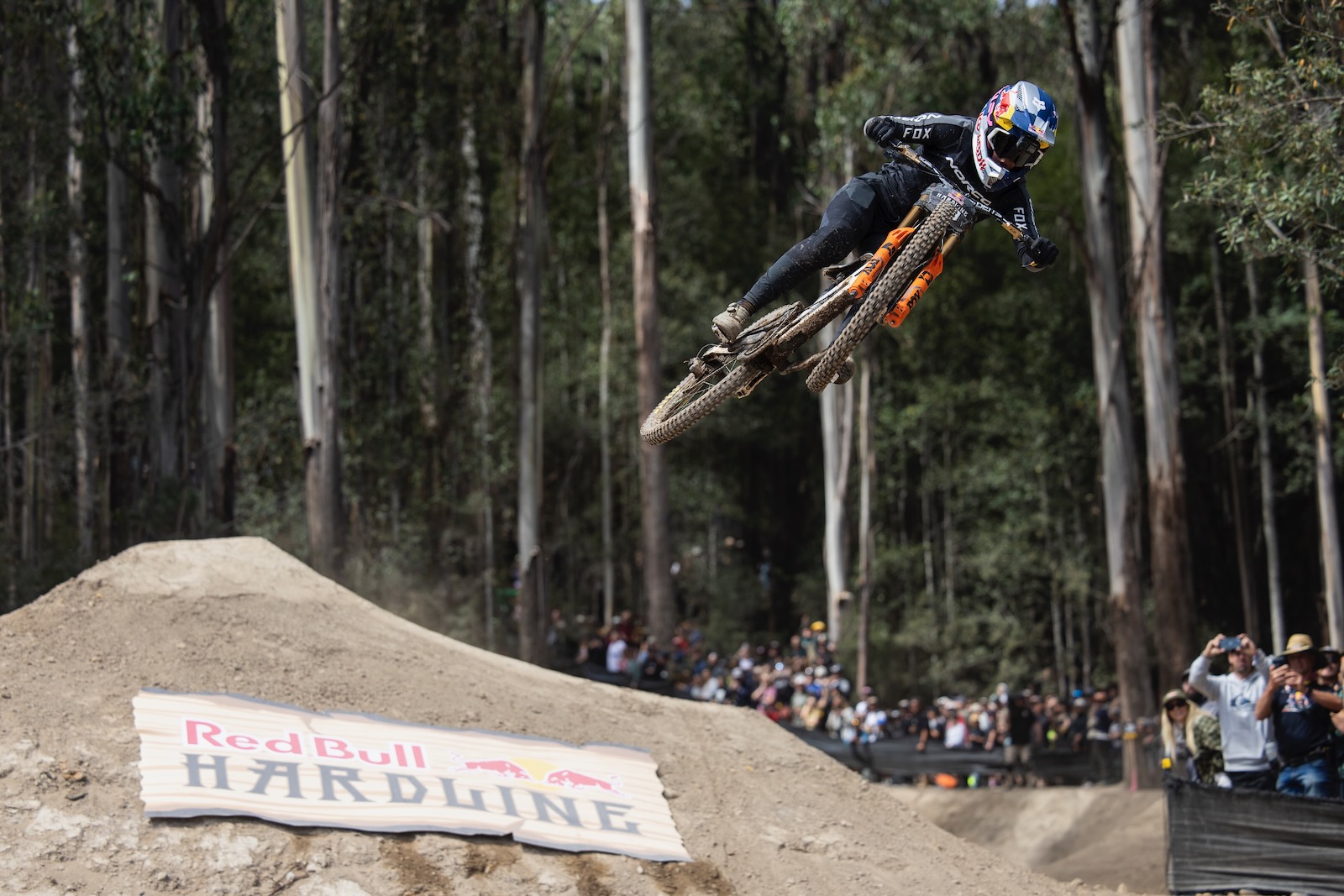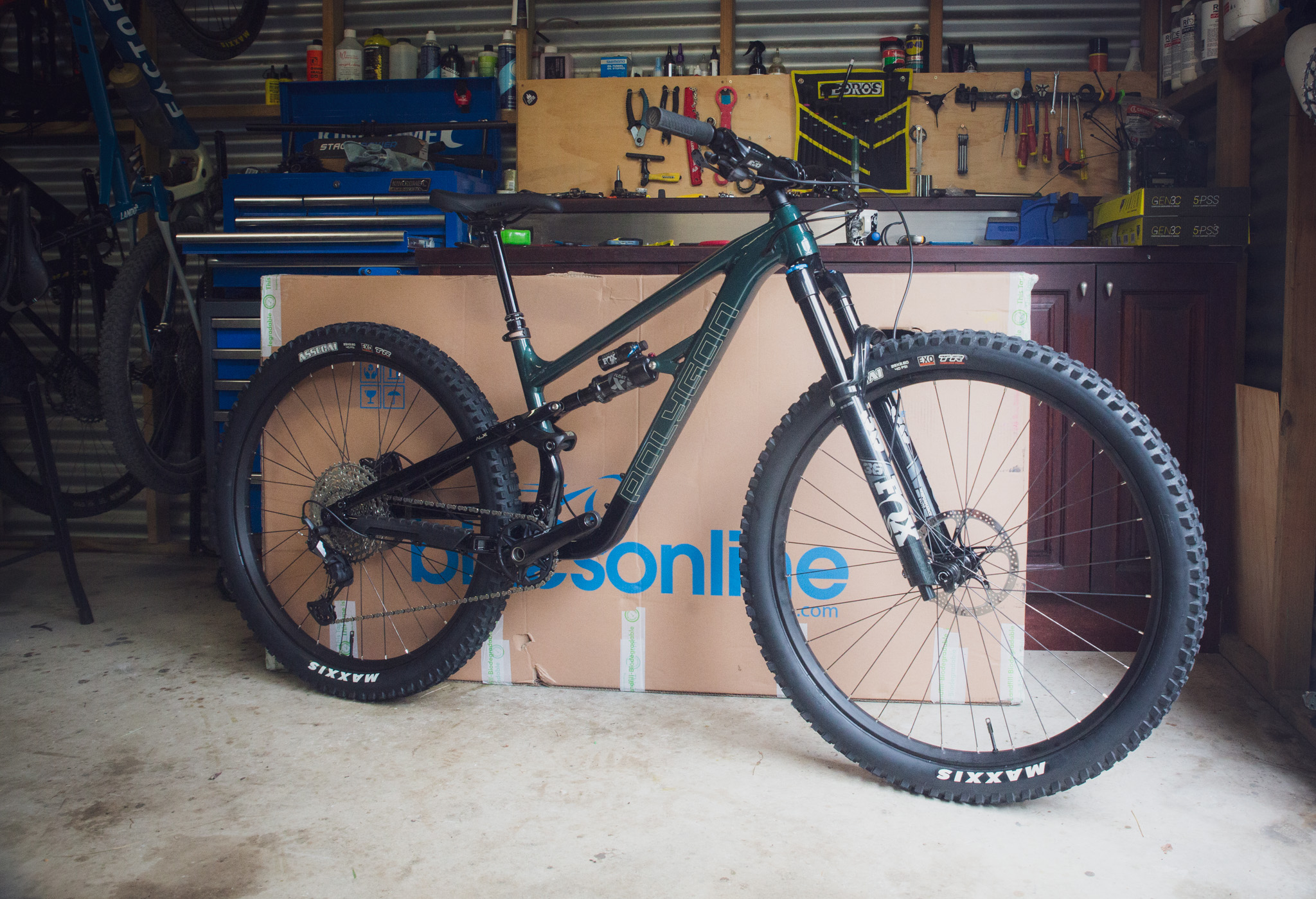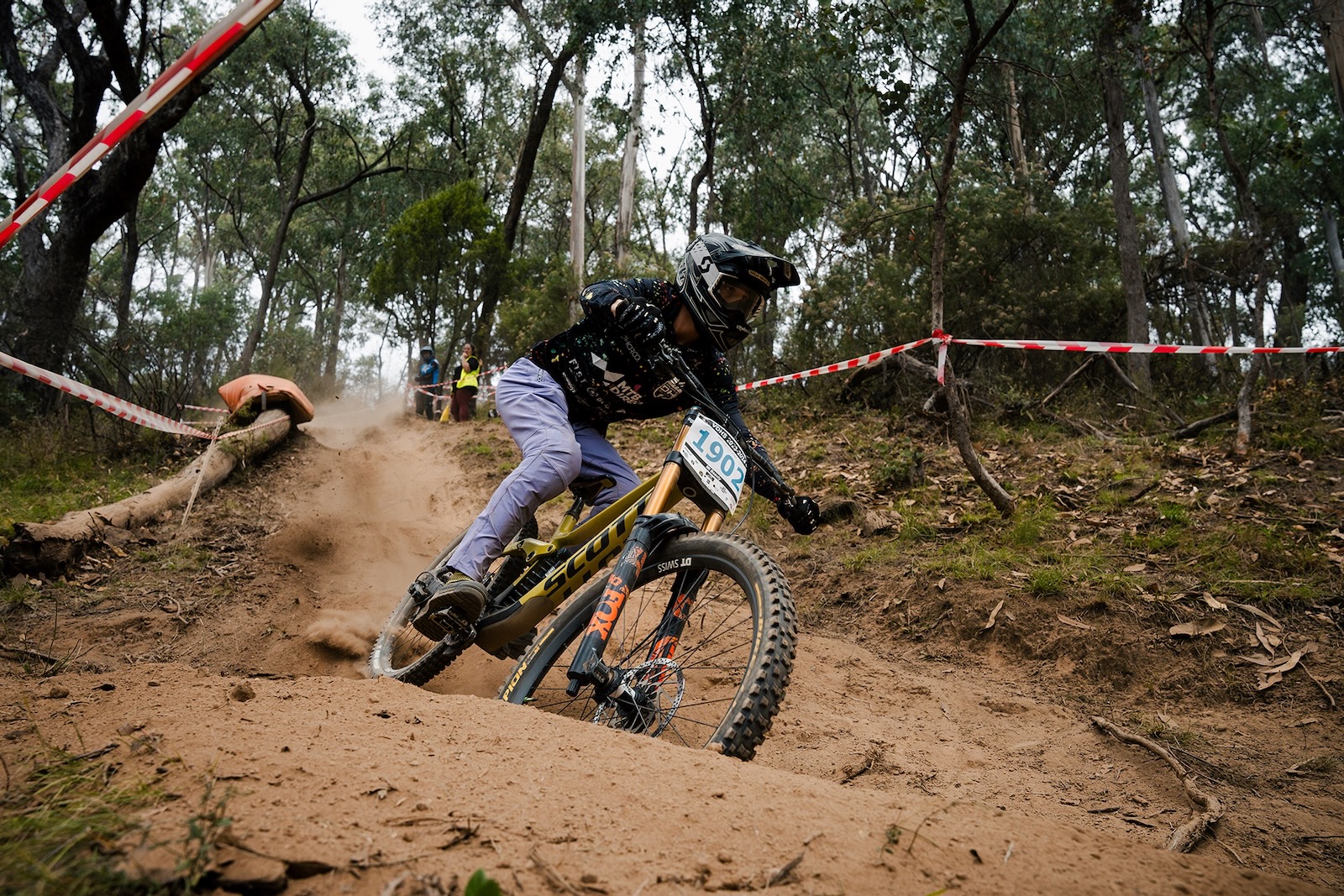TESTED: Canyon Lux CF SLX 9.0 Pro Race
The Canyon Lux was released to much fanfare - we tested and can reveal why.
Photos: Tim Bardsley-Smith
Ever since visiting Canyon in Koblenz, Germany in late 2015 I got a much better sense of the company and their bikes. Canyon are a direct-to-consumer bike brand, meaning you order your bike online and not via your local bike shop. This can put a lot of people off, but Canyon’s pricing is pretty sharp, and their range of mountain bikes really has some category leading options, like the Spectral trail bike, Sender downhill bike and the Exceed hardtail amongst others. When visiting Canyon’s HQ, or Canyon Home as they call it, not only did I get to ride some of the trails near their office and factory, but I got to see the lengths that Canyon go to, to make sure their bikes arrive with customers ready to ride. From experiencing their testing and quality control, design processes, bike building, test riding and boxing, and of course the rooms devoted to staff who are on the other end of a phone line, email address or chat window to answer your questions on fit, parts spec or suitability.
As a German brand, Canyon can’t do things by halves. That isn’t part of the German ethos of design and manufacturing. And as a direct-to-consumer brand they can’t release half-baked bikes to market as customers will go straight to social media if they are upset.
Canyon released an updated version of their Lux cross-country full-suspension bike in late June. Here's our first look after getting some time on it. It was no big surprise, as we had all seen their athletes riding and even winning on them since February. But as the previous Lux was getting a little old, the new Lux adopted some of the geometry of their Exceed hardtail, dropped some weight, and moved right into the modern-XC era.

There are 6 models in the Canyon Lux range. All are carbon fibre, with four Lux SL models with 110mm, front travel and 100mm rear, and two Lux SLX models with 100mm front and rear. While the SLX model uses a higher-grade carbon fibre to shed about 200g for a given size, the frames are otherwise completely the same. The longer travel fork on the SL models just knocks the head angle back half a degree along with expected increases in wheelbase, and a slight reduction in reach. For a full geometry breakdown check the first look post.
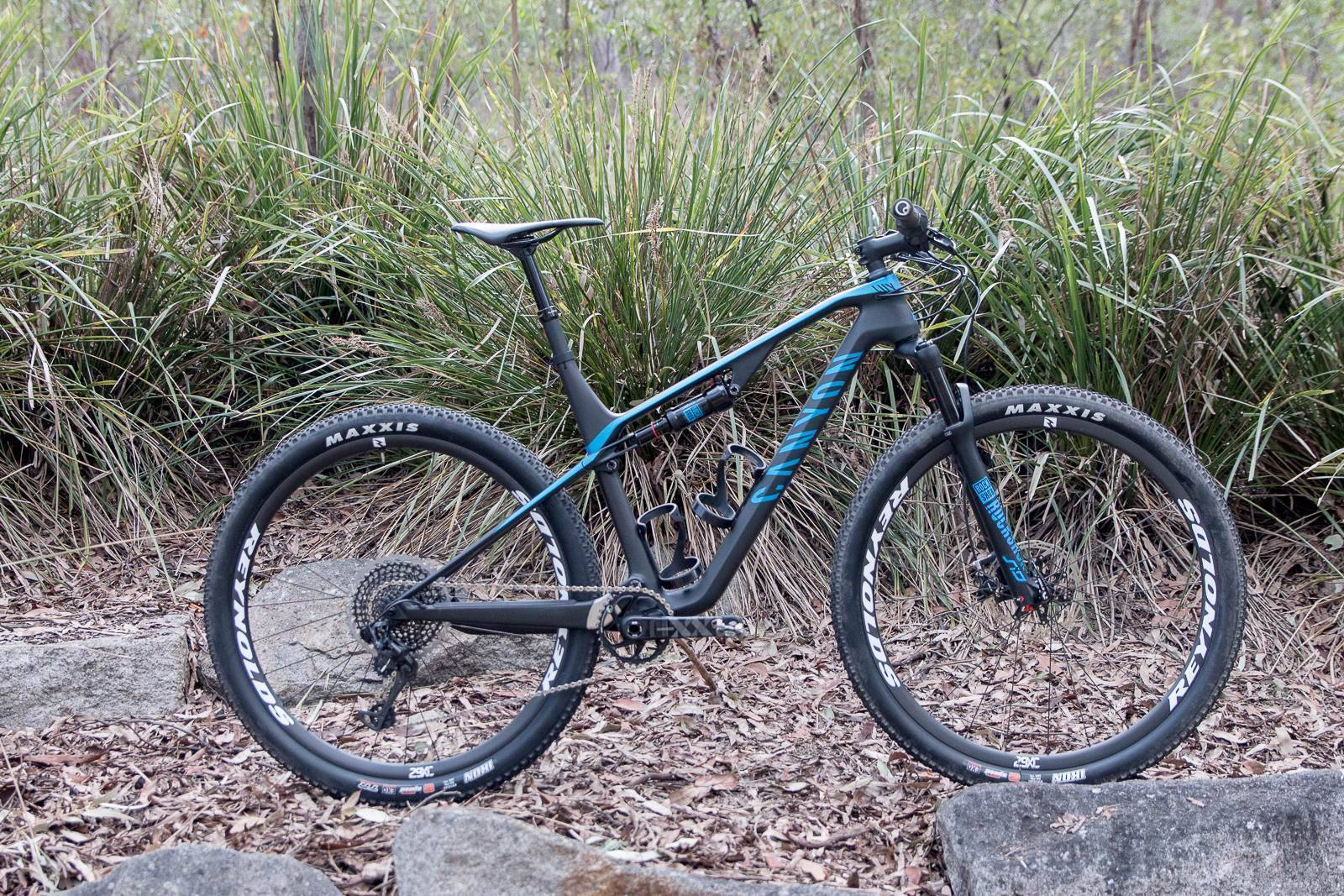
Initial Impressions
Like any Canyon, the Lux comes to your door in a box. There’s very little to do to build the bike. I pulled it out, slotted the front wheel in, attached the dropper to the cable end and fitted the bars to the stem. With some pedals fitted it was all set – save for adjustments to fit and pressures.
The Canyon Lux is very neatly designed, and it borrows plenty of design cues from the Spectral we tested earlier in the year, with a dropped top tube and extended seat mast. The graphics are subtle, and don’t extol virtues of the frame design in bold font at every opportunity – it’s a really good-looking bike. The matte black carbon with blue accents is very smart, and the changes in tube profiles from a huge downtube to a flat top tube and slender stays show the design work that has gone into such a bike. Frame weight was a big objective for the new Lux, and hitting a claimed 1662g for a medium without a shock for the SLX frame puts the Canyon Lux in a very competitive position.
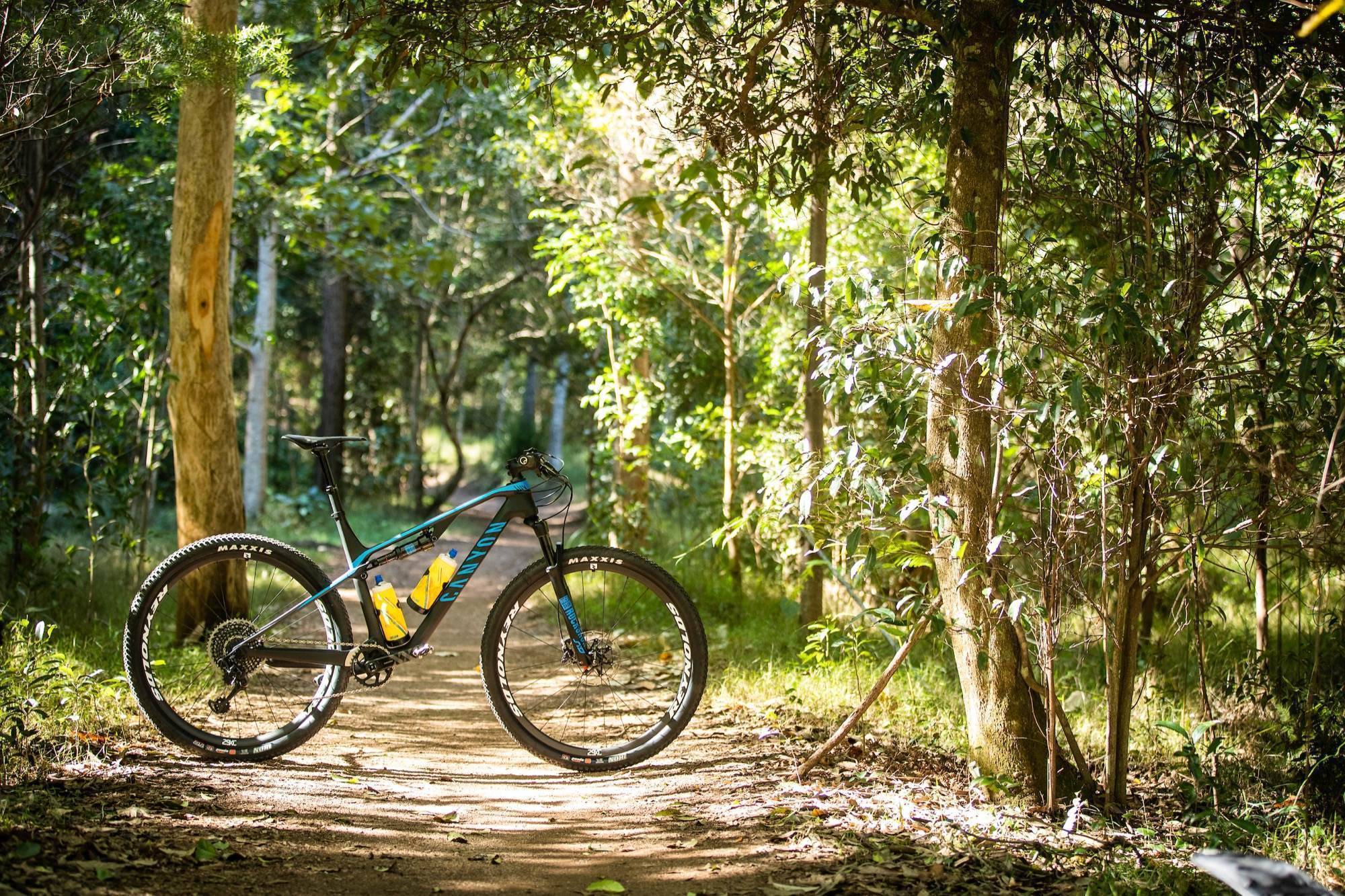
The downtube has been pushed forwards ahead of the bottom bracket to allow for two full sized bottles to fit. My test bike came with two of Canyon’s side mount cages, just to highlight the fact. Right behind the seat tube you can also see the very wide lower pivot, taking up all the room available thanks to the Lux being a single chainring only design. Given 3 of the six bikes in the range run SRAM Eagle, two run Shimano’s 12-speed XTR M9100, and one runs Shimano XT with an 11-46 cassette – 1x is the answer according to Canyon. Canyon have also designed a micro chain guide that runs off the pivot bolt, weighing a scant 4.6g.
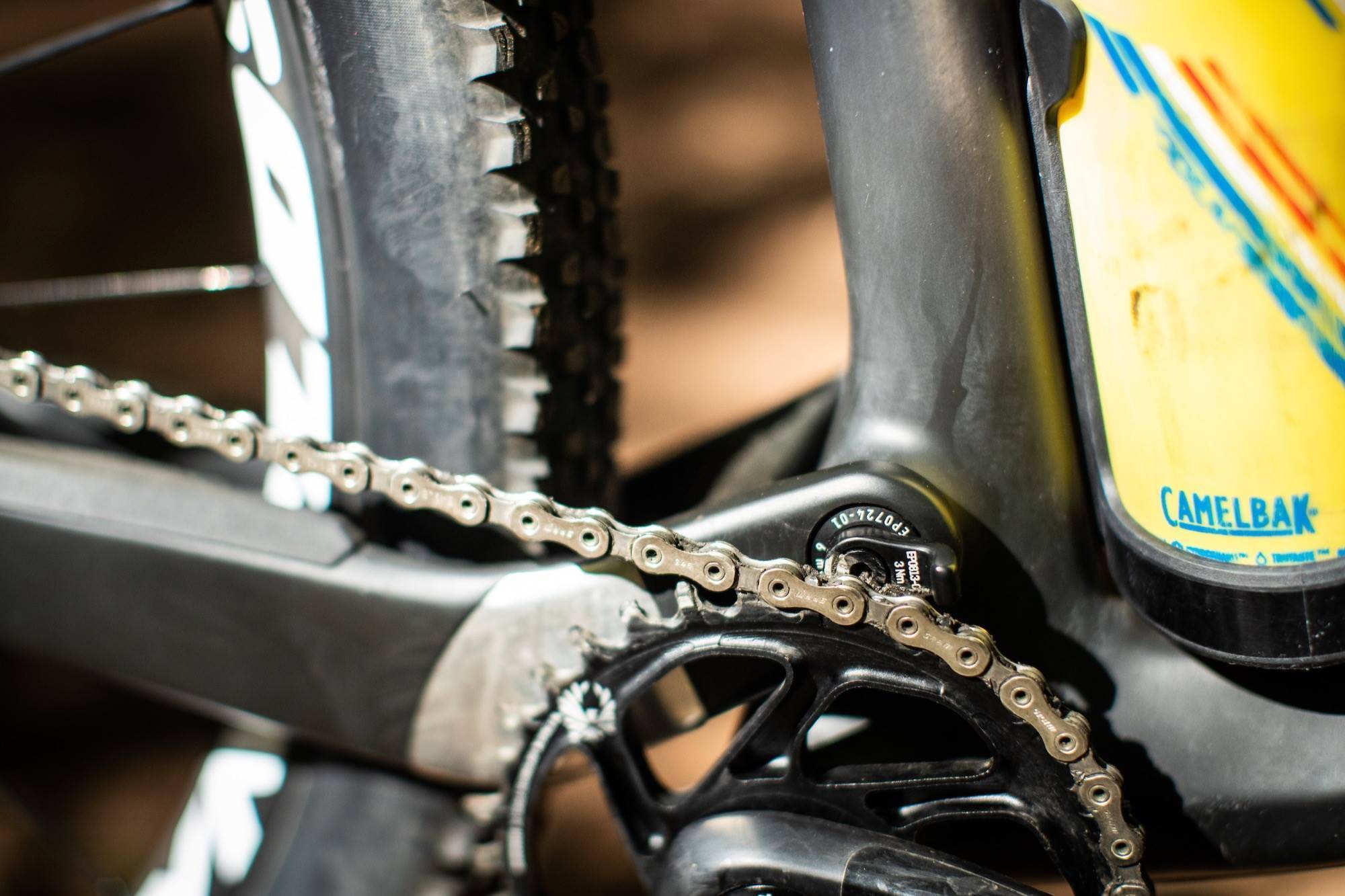
They also made their own chainstay protector which is 8.2g, showing how much Canyon have through about the whole system. The rear through-axle with it’s included tool is another neat addition, making a problem like a flat a little less of a head ache while still having a cleaner finish than some through-axle options.
The back end of the bike is very svelte, with a flex stay instead of a rear pivot, and a flat mount brake mount for the rear disc. This moves the bolts underneath the chainstay for easier access, and Canyon say that by taking the mount off the area that is needed for the flex stay, it also improves suspension performance.
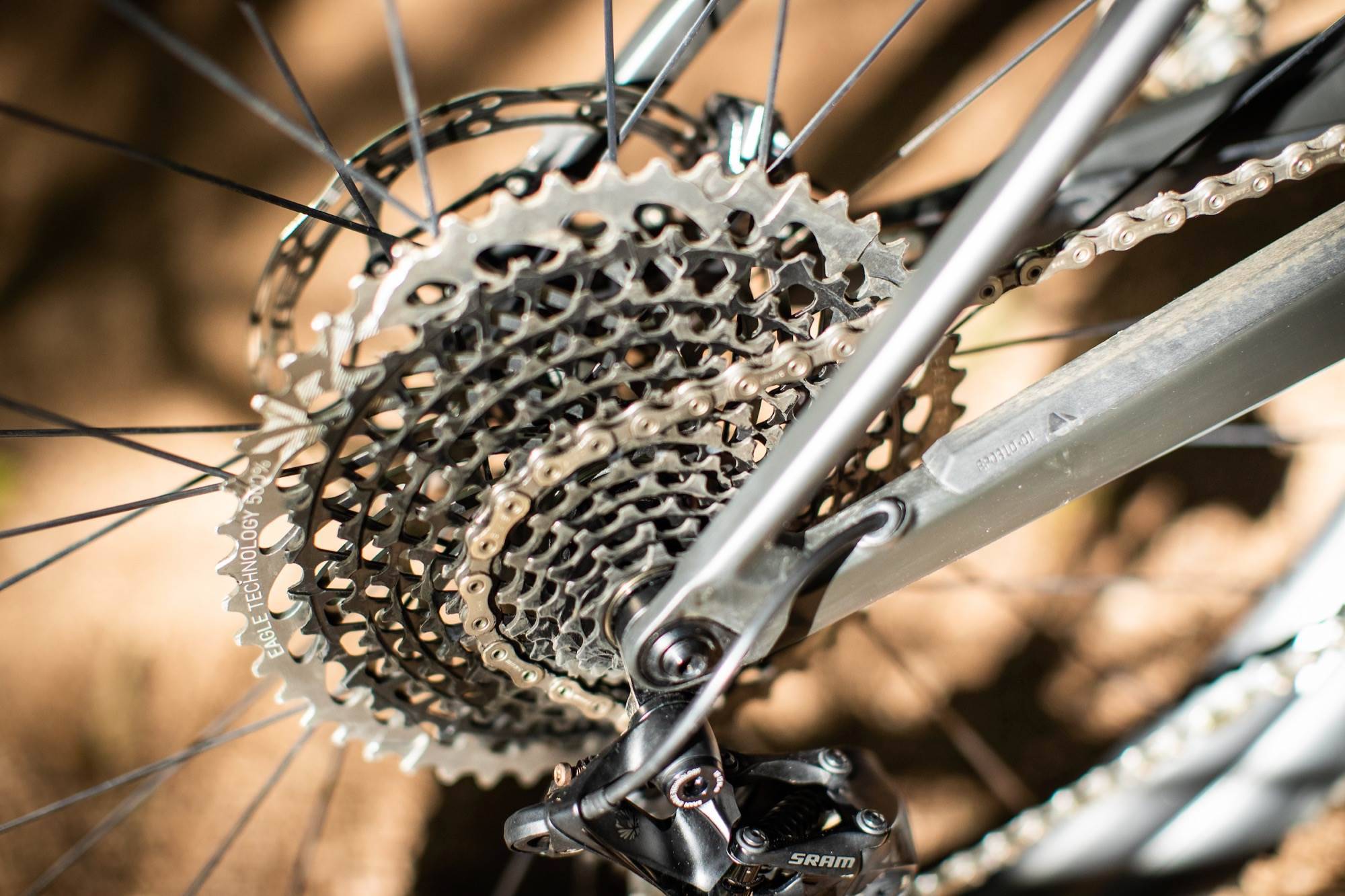
Compared to the previous Lux, the linkage is tiny. Along with removing many metal parts from the frame, the smaller linkage accounts for much of the weight loss compared to the previous model. But with the weight number aside, the biggest change here is the rear suspension. Obviously the rear shock has moved to a position below the top tube, allowing for a very neat remote lock out cable, and clearance for the second bottle cage.
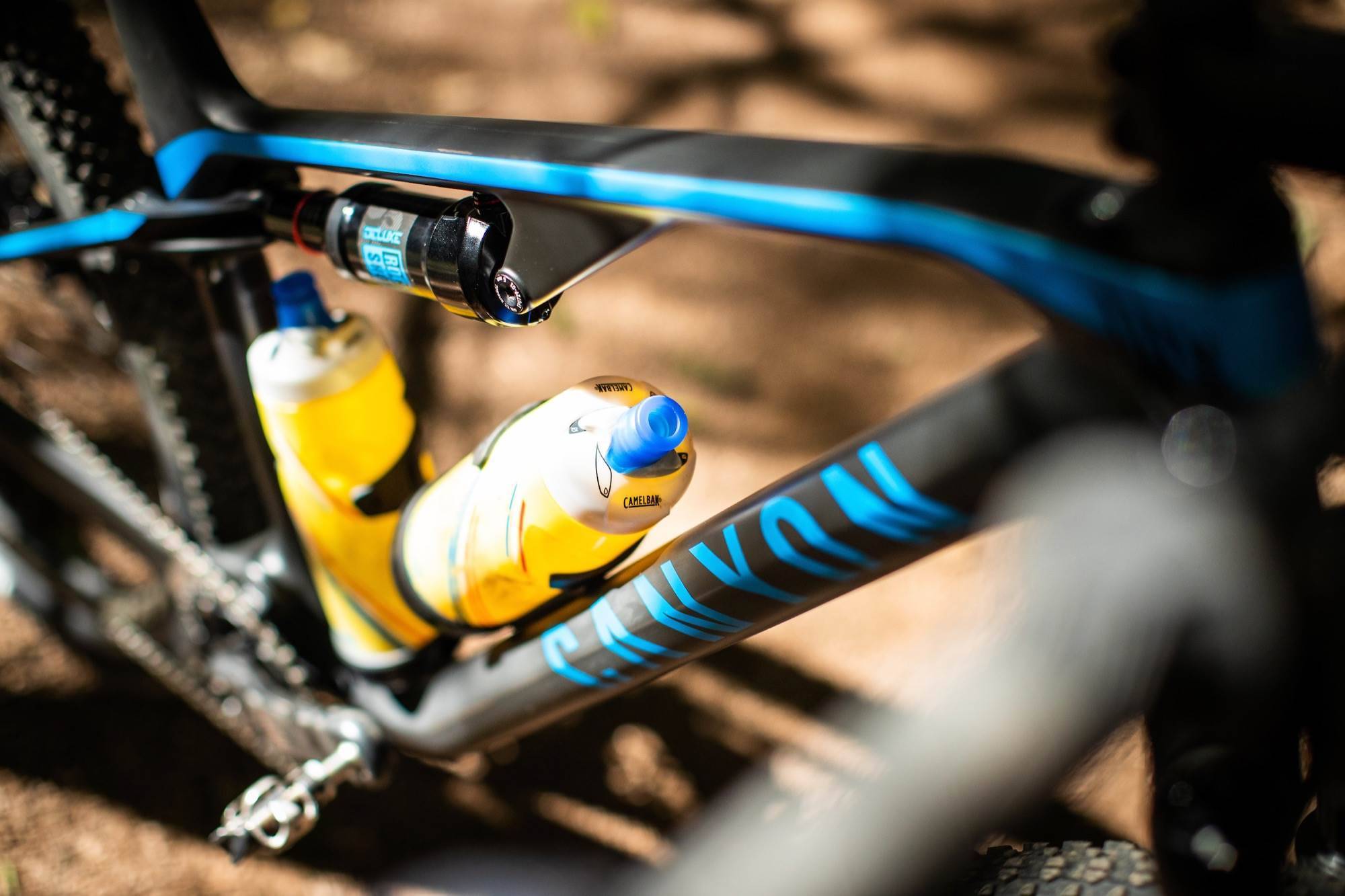
Early in the stroke the rear suspension is very supple, assisting with traction and just general trail chatter. Through the midstroke it firms up a little to be much more supportive, meaning you don’t bob around under hard efforts and you don’t start to blow through your travel on mid sized impacts. And the last third of the stroke is more progressive, avoiding hard bottom outs. I ran the rear shock at 105psi, which is about 35% less than on just about any other XC bike I have ridden. The lower pressures means the whole system tends to be under less load, which should really help extend service intervals and reliability.
I’ve had little time on Reynolds wheels in the past, but the Lux CF SLX 9.0 Pro Race comes with their Black Label XC 259 Carbon. At a claimed 1380g, with 25mm internal width, and Industry Nine hubs for 3 degree engagement – these wheels tick every box for an XC performance wheel set. My test bike came from the press camp in Girona, Spain, and the Maxxis Ikon tyres were set up tubeless already.
After getting the 720mm wide Canyon carbon bars a little lower on the Canyon 80mm stem, I was set to ride. The Lux SLX models sport a 70-degree head angle, and all have the same 80mm stem. Would this be too steep and too long when other XC bikes are hitting the market with 68.5 degree head angles (or less) and 50mm stems?
On The Trail
From the get go, I noticed a few key things with the Canyon Lux: agility, weight and lateral stiffness. Taking off towards the trails, even with the bike’s suspension fully open, the Lux felt stable and responsive. It is rare for bikes to come with such a high-level wheel specced out of the box, and kudos to Canyon for speccing the Lux CF SLX 9.0 Pro Race so well as stock. It means anyone’s first ride on this bike is going to dissuade any apprehension about spending $8000 on a bike they haven’t seen. Good wheels make a difference to any bike, and the lateral rigidity, low weight and fast engagement were immediately appreciated.
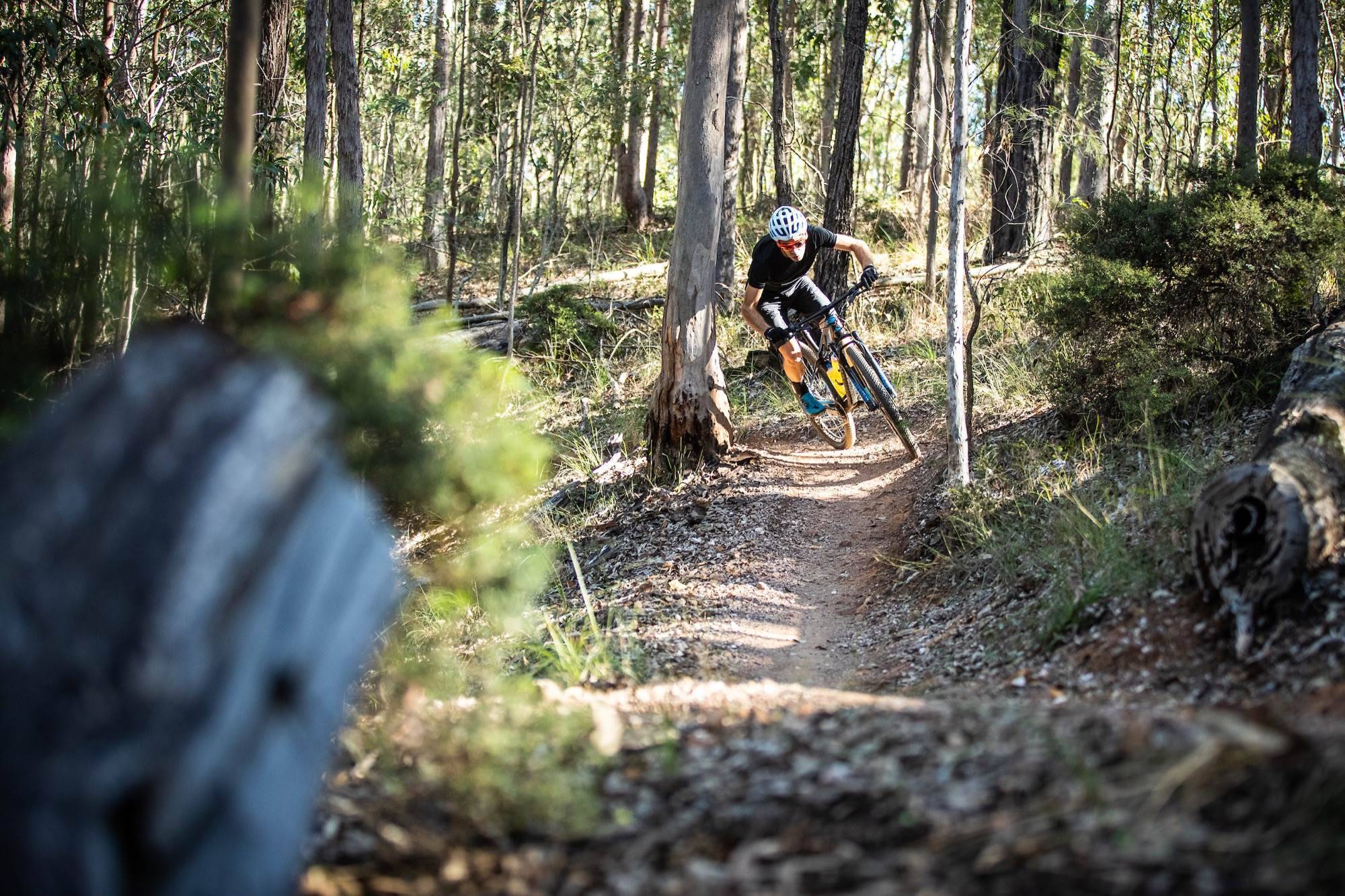
Riding to my local trails with hardtail like efficiency is all well and good, but it’s been the performance off road where the Canyon Lux has truly excelled. With the chainstays at 435mm, and a reach of 455mm in a large, I found it easy to stay centered on the bike – up or down. The first fire trail climb I hit has steep pinches and the ever-present water bars to add a few more degrees to the climb on the way up. While there was a little bit of shock movement under steady pedalling, there wasn’t much. Canyon have really been able to tune the suspension kinematics thanks to making a 1x specific frame. With all Lux models coming equipped with a 34t chain ring, they have designed the bike around the 34-38t chainrings, which is spot on for the intended use and bike specs they have. Combined with the SRAM XX1 Eagle group set I was never left looking for more gears.
Of course, with lockout engaged the bike was a rocket ship. I have shunned remote lockout on my own bikes to keep less going on in the cockpit. The under-bar remote activates both front and rear and has a relatively easy action –you’d want to stay on top of cable maintenance as the leverage isn’t huge with the lever. It is so easy to use and get to, that even if you only use it on the Lux for a brief few seconds, the advantage can be worth it.
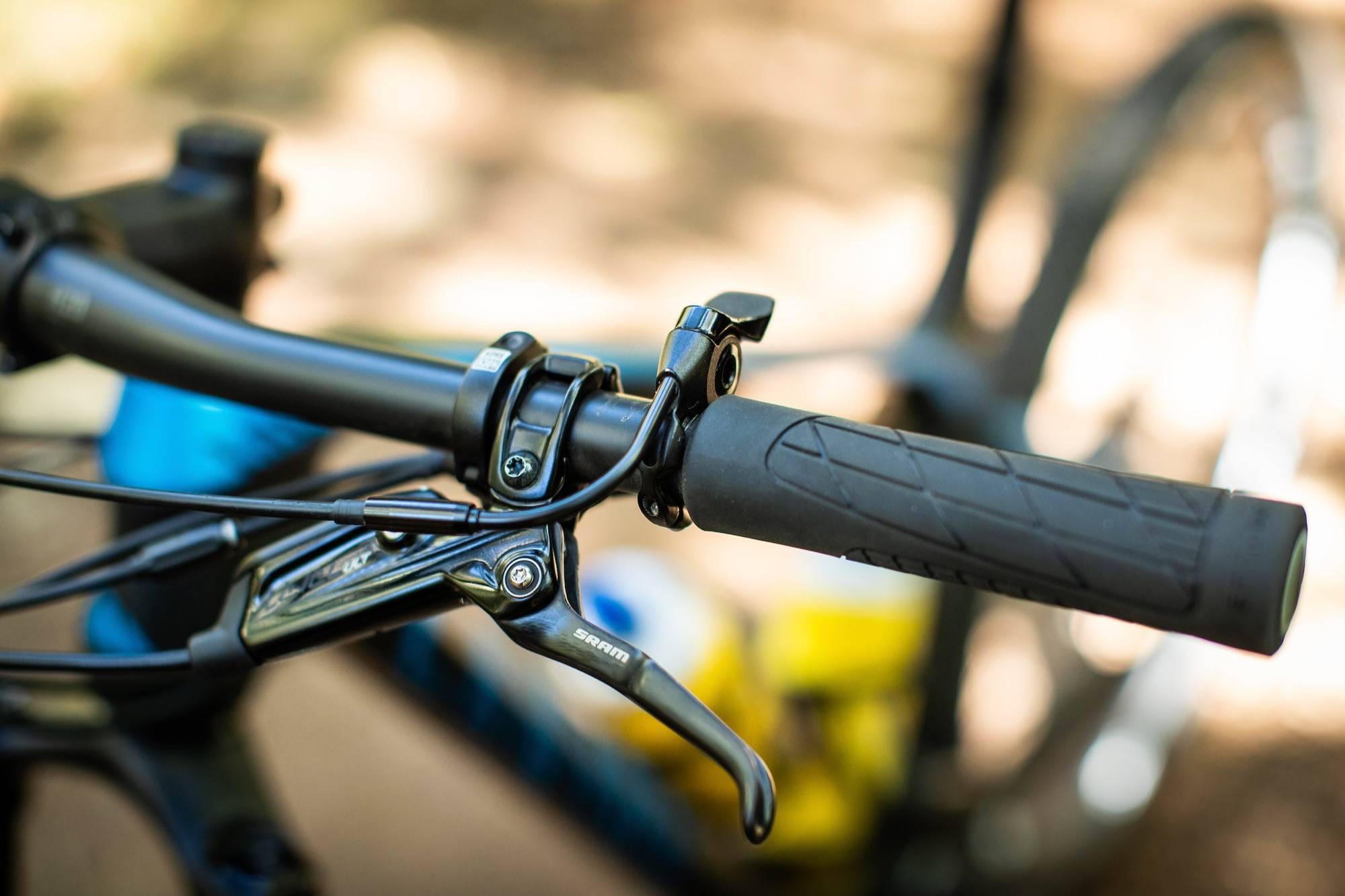
The downside is reaching the dropper post, as the over the bar lever to activate the KS Lev Si 100mm drop post works fine, but it does mean you pull your thumb out from underneath the bars, which is less secure. On ergonomics, Gripshift is light and has few moving parts but I don’t feel it’s the best ergonomic solution. I haven’t ridden with Gripshift for at least a decade, but I found the slight movement of your hand inboard then outboard to shift wasn’t optimal in fast and rough terrain, especially if you’re going to activate the dropper post at the same time. It’s a really small detail, and something that only came up a few times and is based on personal preferences. The Canyon Factory riders who use trigger shifters and no dropper have their solution. This is not a situation that is unique to the Canyon Lux. Any combination of parts in a bike’s cockpit is going to take some compromise if you want remote lockouts and a dropper post. It just depends what your compromise is.
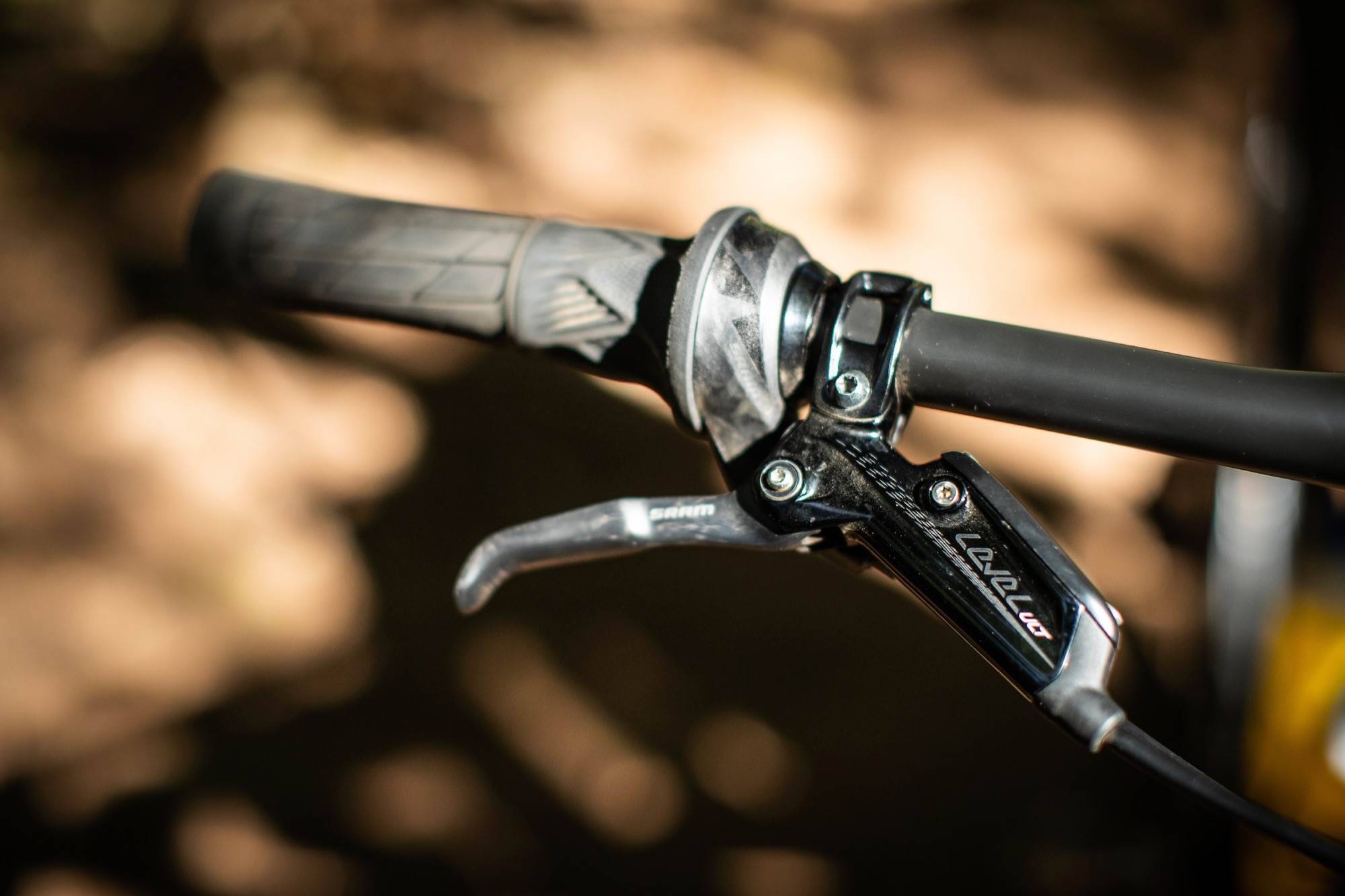
As for the handling, I chose to view it through the eyes of a performance bike for cross-country, marathon and stage racing – exactly what the Canyon Lux has been designed for. In that sense, I think Canyon have nailed it. 70 degrees sounds steep to some, but the 80mm stem helps slow the steering down, and 720mm bars means you can shoot gaps in a race start and fit through trees on your local trails. They might sound narrow to a trail rider, but 700-720 is about spot on for most XC riders. I think the addition of the dropper post as a stock item on four of the six Lux models is a stellar move by Canyon. So many brands have been making their XC bikes dropper compatible, but having them come equipped with a dropper out of the box is rare. It really helps you stay centered on the bike on fast corners and descents, as does the geometry. An XC bike isn’t about getting off the back and hanging on, it’s about pushing the bike hard through a corner, or down a chute. You have to have weight balanced and the geometry and equipment choice really plays to that.
Conversely, the four Canyon Lux SL models all come with 110mm travel forks which dial the geometry back a little. With a head angle at sub 70 degrees (69.5) all of a sudden the numbers on paper look like what you might expect for a modern XC bike. Combine that with forks like a Fox 34 Step Cast up front and you get a bike that starts to bridge the gap between XC and fast trail. A bike that is set to tackle fast local trails, marathon races or a week-long stage race or huge bike adventure. There is nothing stopping you changing the air spring in the fork on a SLX model like the one I tested to achieve the same result.
The Canyon climbed like a scalded cat thanks to low weight and efficient suspension, but I was really pleased with the descending prowess. It’s not a rowdy trail bike, but the stiffness of the frame and the balanced geometry means it throws up no surprises. The Lux responds well to being ridden through rough and steep terrain – like any XC bike it needs a pilot not a passenger. But the more I pushed it on local trails I was familiar with, the more I found it was happy and hard to get unsettled. The Lux is .75 degrees slacker than my own bike, and noticeably stiffer laterally, and shorter in the back end – both likely due to the Lux having Boost spacing. The differences are really big on the trail though and I think the Lux has the performance handling a modern XC bike should have.
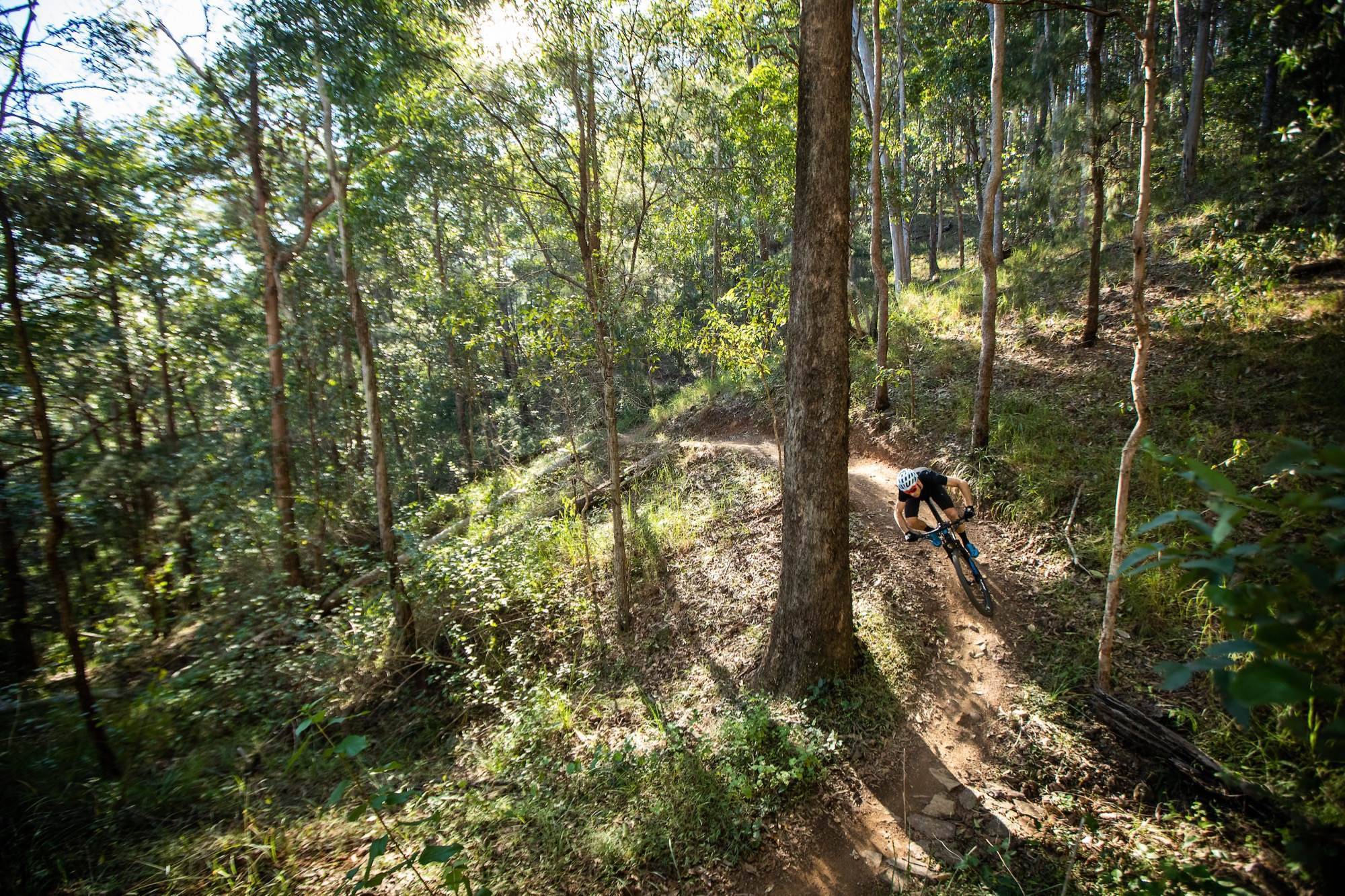
Our Take
As a direct to consumer brand, Canyon can’t take too many risks. They have to rely on thorough product design and testing. They have the engineers, and the athletes, to deliver bikes that are thoroughly refined. But I think with the Canyon Lux, the German brand have not only created a winning frame platform, but they have delivered 6 models that all represent killer value for the range they sit in, ticking off the demands that any cross-country, marathon or stage race fan should have. From rims with 25mm internal widths for greater grip and stability, excellent tread choice to complement that, wide range 1x group sets, quality suspension, dropper posts, and dual water bottle capability – it’s all there. Combine that with a modern performance geometry, and not just throwing a 120mm fork on a modified trail bike or current XC bike, and you have a bike that has been uniquely designed to meet the demands of many competitive mountain bikers.
Canyon have steered clear of any proprietary parts, and have a clean design that is said to operate with minimal maintenance. The Lux frame is an ode to engineering when the simplest design to achieve the task is the best solution. Pivots are wide where they need to be, removed where they aren’t required, and protected where required. If you are looking for a bike to ride your local trails fast, or to tackle any sort of endurance event format, then I strongly believe that Canyon will have a LUX model to suit. While their entry model is still close to $4000 once delivered, it is full carbon, with quality RockShox suspension, DT Swiss wheels and with a SRAM Eagle group set. That value is hard to find elsewhere, and with a bike like the Lux CF SLX 9.0 Pro Race, I don’t believe you can find the same build quality and frame performance at the same price anywhere else. I would highly recommend looking at a Canyon Lux if they fit what you need in your new mountain bike.
RRP: $8149
From: Canyon

